News Digest
November 28, 2025

‘Supreme Court ruling can open 60 percent of Aravalli range to mining’
In its November 20 judgment, the Supreme Court adopted the Union environment ministry’s criterion, which said that only hills rising at least 100 metres above local relief, or clusters of such hills within 500 metres of each other, will now be recognised as part of the Aravalli range, reports The Times of India. This shift, experts say, could open up nearly 60 percent of the ancient range, which is one of the oldest in the world, to mining. Although the apex court has simultaneously prohibited the granting of new mining leases until the Indian Council of Forestry Research and Education prepares a comprehensive management plan for sustainable mining, conservationists argue that the definitional shift itself carries far heavier consequences. “The Aravalli region acts as a critical recharge zone,” said water conservationist Rajendra Singh, “Disturbance caused by mining can severely alter groundwater tables and purity.”

Children in Delhi worst affected by air pollution
Since last month, Delhi’s Air Quality Index (AQI) has been hovering between 300 and 400 — more than 20 times the limit recommended by the World Health Organization, reports the BBC. Readings above 400 affect all healthy people and seriously impact those with existing diseases, but high exposure to PM2.5 hits children and the elderly the hardest. Research over the years has highlighted the devastating impact air pollution is having on young children across the world – leading to stunted development, weaker immunity and lower cognitive ability. Across Delhi, many hospitals have seen an influx of children who are sick because of the unbreathable air. “These cases have increased tenfold in recent years,” said Dr Shishir Bhatnagar, a paediatrician at a Noida clinic.

Climate summit in Brazil failed to deliver as ‘People’s COP’
COP30 was the second largest UN climate summit ever, and the first since Glasgow Cop26 in 2021, to take place in a country that permits real public protest, writes The Conversation. Protests of various sizes happened every day during the two-week conference, most notably an Indigenous-led “great people’s march.” The visible pressure helped obtain recognition of four new Indigenous territories in Brazil. But the final negotiations were once again dominated by fossil fuel interests and delaying tactics; the main action happened through voluntary pledges, not the binding global agreement. The Belém pledge, backed by countries including Japan, India and Brazil, committed signatories to quadruple sustainable fuels production and use by 2035. After ten years of climate (in)action since the Paris agreement, COP30 promised to be an “implementation Cop” but failed to deliver.

COP30 again divides rich and poor nations on climate action
In the recently concluded COP30, developed nations such as the United Kingdom, Germany and France pushed for a fossil fuel phase-out, but developing countries including India, China, Bolivia, Egypt and Saudi Arabia advocated for a phase-down, reports Scroll.in. They want fossil fuel use to be reduced but did not agree to eliminate it entirely since their economic growth depends heavily on coal and petrol. They also demanded legally binding commitments from developed countries on climate finance that would make transitioning away from fossil fuels possible. Major differences remained, especially on a roadmap to phase out fossil fuels and on adaptation finance. A Just Transition mechanism – moving away from fossil fuels to renewable sources of energy – was agreed in the formal document but it does not guarantee any funding for this yet.

Stopping plastic export can help UK create 5,400 new jobs: Report
A report finds that exporting plastic creates environmental problems for many countries that receive it as they do not have the ability to recycle it, reports The Guardian. It also removes valuable feedstock for a British recycling industry, the report argues. Campaigners want the closure of the loophole that makes it cheaper to export plastic waste rather than recycle it in the UK. According to the research, the UK could end its reliance on exporting plastic waste by 2030 to support the creation of 5,400 new jobs and take responsibility for the environmental impact of its waste. James McLeary, the managing director of Biffa Polymers, which commissioned the report, said the company had recycled 10bn plastic HDPE milk bottles in the last 20 years. He described this as a circular economy success story.
November 14, 2025
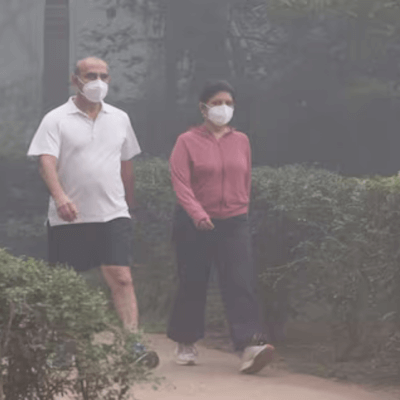
Delhi records worst air pollution level at AQI 428
Delhi’s average Air Quality Index (AQI) stood at 428 — the worst since December 19 last year when it reached 451, reports First Post. Visibility dropped to 600 metres at Safdarjung and 700 metres at Palam around 6.30am that day. Stage III of GRAP (Graded Response Action Plan) was implemented across Delhi, Gurgaon, Faridabad, Ghaziabad, and Gautam Buddh Nagar. The measures include a ban on construction and demolition activities and restrictions on BS-III petrol and BS-IV diesel four-wheelers, except those engaged in essential services. Non-essential diesel-operated medium goods vehicles and BS-IV light commercial vehicles (LCVs) registered outside Delhi are barred from entering the capital while restrictions remain. Delhi’s Directorate of Education directed schools to conduct classes up to Class V in hybrid mode. The Commission also advised governments in Delhi and NCR to stagger office timings to reduce vehicular congestion during peak hours.
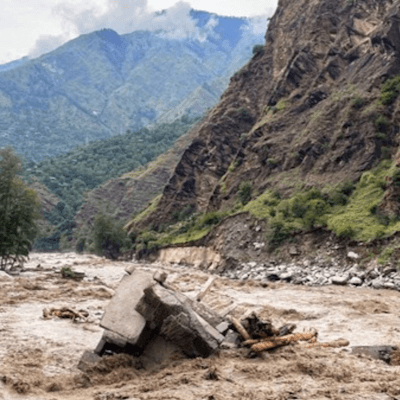
India ninth worst-hit by extreme weather in 30 years: Study
The report ‘Climate Risk Index 2026’, released on November 11, ranks India ninth most-affected by extreme weather events, reports The Print. Extreme events have claimed an estimated eight lakh lives worldwide between 1995 and 2024. Across India, floods, heatwaves, cyclones, and drought caused economic losses of nearly USD 170 billion and over 80,000 fatalities. The report reveals the extent of devastation by extreme weather events, exacerbated by climate change, as leaders meet in Belem, Brazil for the annual climate summit COP30. At least 9,700 extreme weather events have struck the world over the past 30 years, the report stated. Published every year since 2006, the report is one of the longest-running annual impact-related assessments in the world. It indexes nations by comparing their economic losses, fatalities, and total people affected by natural disasters. The 2026 index has Dominica at the top, followed by Myanmar.

COP30 message: ‘Don’t fight one another, fight climate crisis’
The COP30 climate summit opened on November 10 with some countries, including Brazil, suggesting that countries focus on smaller efforts that do not need consensus, such as deforestation, reports Reuters. “In this arena of COP30, your job here is not to fight one another – your job here is to fight this climate crisis, together,” UN Climate Change Executive Secretary Simon Stiell told delegates from more than 190 countries attending. COP30 President Andre Correa do Lago told a news conference: “I think that the absence of the US … has opened some space for the world to see what developing countries are doing.” Germany said European countries would push for commitments to rein in fossil fuel use. Countries were joined by Indigenous leaders, who arrived on Sunday by boat after travelling some 3,000 km from the Andes. They are demanding more say in how their territories are managed as climate change escalates and industries such as mining, logging and oil drilling push deeper into forests.

Trump gives COP30 a miss but US leaders not giving up
Although Washington is not sending a top-level team to this year’s COP climate summit in Belem, Brazil, delegates from Washington state, along with governors, mayors and other representatives from states and cities across the US, are determined to pick up the slack, reports DW. Together, they represent about two-thirds of the US population and produce nearly three-quarters of the country’s economic output. President Donald Trump, who has pulled the United States out of the Paris Agreement for the second time, slashed funding for renewable energy, championed fossil fuel projects and told world leaders at the UN in September that climate change is the “greatest con job ever perpetrated on the world”. However, state and local leaders assert that “The US has not pulled out of Paris Agreement. One part of the United States has, and that’s the federal government,” said Jay Inslee, the former Democratic governor of Washington and a founding member of the US Climate Alliance, a bipartisan coalition of governors.

Climate finance on COP30 agenda to mobilise more funds
As countries gather in Belem for COP30, pressure is mounting on fast-developing, high-polluting countries such as China, India and the Gulf states to pay climate finance, reports Reuters. Historically, only industrialised countries like the US, Japan and nations in Europe have contributed. The world set its first climate finance targets in 2009, with wealthy countries pledging USD 30 billion annually. They increased that in 2010 to $100 billion by 2020, but did not meet the full annual amount until 2022. It was agreed at COP29 in Baku to work on boosting annual funding to at least USD 1.3 trillion, with dozens of finance ministers producing a ‘Baku-to-Belem Roadmap’ of recommendations for how to do so. Brazil is urging countries at COP30 to contribute to the newly launched Tropical Forests Forever Facility, or TFFF, which aims to raise USD 25 billion in government and philanthropic funding to mobilise another USD 100 billion in private money.

Mamdani faces a daunting task of making New York affordable
Zohran Mamdani will take on his new role as New York Mayor from January and has to start making his promises of free childcare, fast buses and a rent freeze a reality, reports The Guardian. The 34-year-old democratic socialist ran New York’s most ambitious mayoral campaign in years, attracting thousands of supporters with bold promises to make the largest US city affordable. A strength of Mamdani’s campaign was that he did not just make promises – he told people how he would pay for them. He plans to fund his affordability agenda by raising the corporate tax rate in New York City and introducing a 2 percent tax on the very wealthiest New Yorkers. “Mamdani’s got to get his ideas realised in policy, and New York is notoriously difficult to govern,” said Grant Reeher, a political science professor at Syracuse University’s Maxwell School of Citizenship and Public Affairs.
October 31, 2025
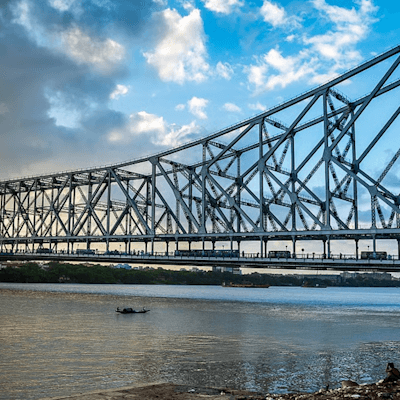
Ganga highly water-stressed, needs urgent action: Report
According to a report, No Water, No Growth 2 – Rising mother river risks threaten half the total GDP of 16 Asian countries, the Ganga is even more stressed than the Indus and Yellow, writes Down to Earth. Warning that India must act as the basin, the report says that the Ganga accounts for 44 percent of its Gross Domestic Product (GDP) and 25 percent of its coal fleet. The Ganga saw the biggest population growth in absolute numbers of around 97 million people, far exceeding 63 million who flocked to the Indus and the 7.3 million to the Amu Darya. The Brahmaputra also saw a sizeable increase in population of 22 million. According to the report, rising urbanisation will only drive more people to the cities along these rivers, adding ever more stress and pressure on river basins.
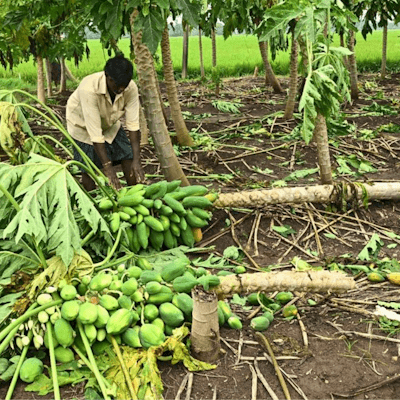
Cyclone Montha claims two lives, affects train and road transport
Two persons died as Cyclone Montha hit Andhra Pradesh, leaving a trail of destruction, reports The Hindu. The severe cyclonic storm crossed the AP and Yanam coasts on October 28, close to Narsapuram, the India Meteorological Department (IMD) said. Wind speeds touched 90 kmph near the Machilipatnam coast as the storm crossed. It gradually weakened into a cyclonic storm by 2.30 a.m. and then into a deep depression the following day. Agricultural crops on 87,000 hectares in Andhra Pradesh were destroyed. The cyclone damaged roads, bridges and culverts, and uprooted trees, officials said. The strong winds uprooted 446 electric poles, damaged 30 transformers and uprooted 506 trees in Krishna district. Heavy rains caused major disruption to rail and road transport across Telangana; several trains were stranded and many cancelled.
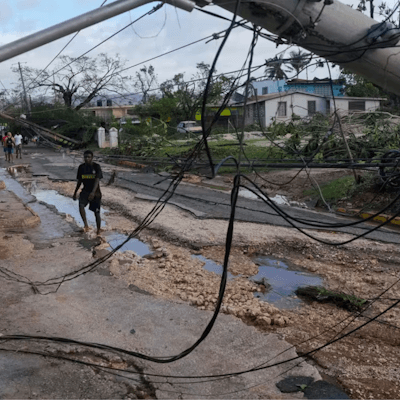
7 dead as Hurricane Melissa devastates Jamaica, Cuba
At least seven people were killed and more than 4,00,000 people directly impacted in Jamaica as Hurricane Melissa, on October 30, raged through the island nation as the most powerful storm in its history and one of the most potent recorded anywhere, reports NBC News. The United Nations said the damage was on a level “never seen before”. The World Meteorological Organisation tropical cyclone specialist Anne-Claire Fontan said: “For Jamaica, it will be the storm of the century for sure.” Cuba is also counting the cost after the storm collapsed houses and blocked roads, after some 7,35,000 people spent the night in shelters. More than 7,35,000 were evacuated in Cuba as Hu rricane Melissa approached, according to President Miguel Díaz-Canel. In the Bahamas, 1,485 were evacuated before all flights were suspended ahead of the approaching storm.
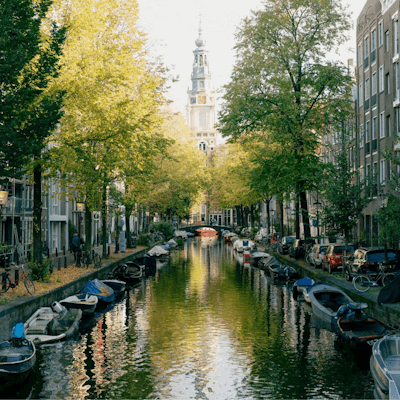
Climate-resilient Amsterdam bogged by new challenges
On Amsterdam’s 750th anniversary, it continues to be a leader in climate adaptation — showing how a city can thrive in overcoming existential challenges, reports Bloomberg. Battling against unforgiving terrain and the ever-present threat of the sea — the city lies two metres (roughly 6.5 feet) below sea level — Amsterdam has from the outset had to invest huge resources to keep itself safe and dry, and to make large-scale habitation feasible. Perhaps if Amsterdam had not been drastically affected by extreme weather linked to global warming, it might never have become a city. The region’s more than seven centuries of experience managing water carry urgent lessons for other cities battling climate change. As freak downpours increase, Amsterdam is now trying not just to channel water away, but also to soak more without flooding. The city’s current planning is aimed at withstanding an extreme rainfall event of 70 millimetres in one hour.

Devastating consequences inevitable but emission cuts still vital: Guterres
Secretary general of the UN António Guterres acknowledged it is now “inevitable” that humanity will overshoot the 1.5 degree Celsius target in the Paris climate agreement with “devastating consequences” for the world. In an interview to The Guardian, he urged the leaders, who will gather in the Brazilian rainforest city of Belém for COP30, to realise that the longer they delay cutting emissions, the greater the danger of passing catastrophic “tipping points” in the Amazon, the Arctic and the oceans. He said the priority at COP30 was to shift direction: “It is absolutely indispensable to change course in order to make sure that the overshoot is as short as possible and as low in intensity as possible to avoid tipping points like the Amazon. We don’t want to see the Amazon as a savannah. But that’s a real risk if we don’t change course and don’t make a dramatic decrease in emissions as soon as possible.”
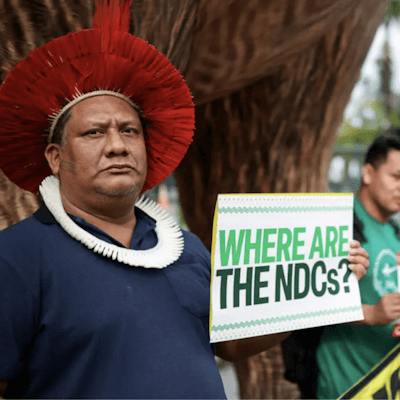
Belem COP30 to take stock of Paris Agreement of 2015
COP30 at Brazil’s Belem will provide an opportunity to take stock 10 years after the landmark Paris Agreement of 2015, reports France 24. Under the accord, each country pledged to submit a climate roadmap every five years detailing its strategy for reducing greenhouse gas emissions. The collective goal is to keep global warming below the critical threshold of 1.5°C above pre-industrial levels. While these emission-reduction roadmaps – or Nationally Determined Contributions – were due by the end of September, many countries have yet to submit theirs. The European Union, for example, is deeply divided on the issue and is not expected to submit its contribution just days before the summit begins. Providing financial support for developing countries will be back at the centre of discussions.
October 17, 2025
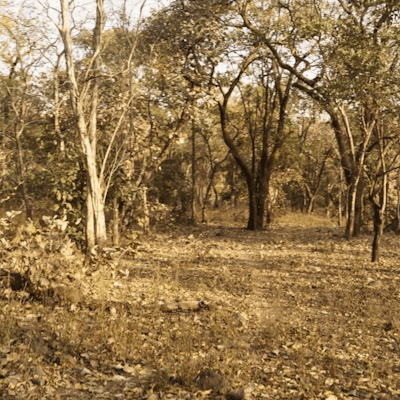
Safari park in Aravalli is conservation project: Haryana to SC
The Haryana government defended its plan to develop a safari park in the Aravalli hills, observes Ground Report. It told the Supreme Court that this is a conservation project, not a commercial venture. The state said the land chosen for the project is degraded due to past mining and will be restored through ecological measures. “The selected area has a canopy density of less than 40 percent and is infested with invasive species in most of the area,” said Subhash Chander Yadav, Chief Conservator of Forest (Wildlife), Gurugram, “The wildlife corridor will not be affected with the establishment of the proposed safari park in any manner.” The petitioners maintain that the Aravalli range is one of India’s most critical ecological zones and serves as a natural water recharge area for the region. They warned that introducing large-scale human activity could disrupt local wildlife and damage the environment.
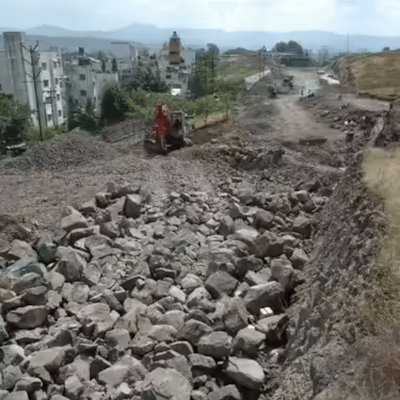
Environmental nod must for road project through Vetal Tekdi: SC
The Supreme Court on October 15 ordered Pune Municipal Corporation to conduct a fresh Environment Impact Assessment for the road project proposed through Pune’s pristine Vetal Tekdi, reports The Times of India. It halted the construction of the proposed Balbharati-Paud Phata Link Road project, pending environment clearance. Senior advocate Anitha Shenoy, representing the petitioner, argued that the proposed alignment cut through the Indian Law Society campus and the adjoining Law College Hill, an ecologically sensitive area. A bench comprising Chief Justice BR Gavai and Justice K Vinod Chandran said there was a need to balance development with the conservation of environment and forests. “We direct that the project shall not be commenced unless environmental clearance is granted by the EIA (environmental impact assessment) authority,” the bench said. “Taking into consideration that the project has been pending for a long period, we direct that the EIA decide the application.”

‘Earth enters its first climate tipping point as coral reefs die’
The widespread death of coral reefs is causing irreversible climate tipping points, according to a landmark report produced by 160 scientists across the world, reports CNN. As humans burn fossil fuels and ratchet up temperatures, it’s already driving more severe heat waves, floods, droughts, and wildfires. Since 2023, the world’s reefs have been enduring the worst mass bleaching event on record as oceans reach record high temperatures, with more than 80 percent affected. An underwater riot of colour and life is being replaced with a bleached, seaweed-dominated landscape. Coral reefs, essential habitat for marine species and vital for food security, contribute trillions to the global economy. Unless global warming is reversed “extensive reefs as we know them will be lost,” the authors wrote. The planet is on the brink of several more tipping points as it’s all but certain to breach the globally agreed goal of limiting warming to 1.5 degrees Celsius above pre-industrial levels, said the report.
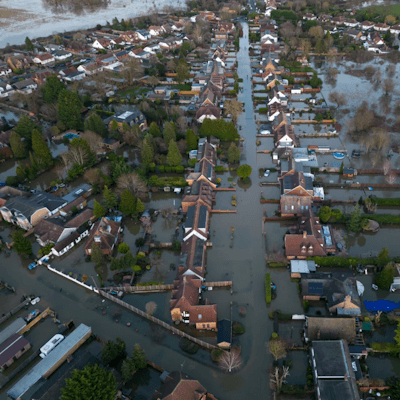
Double whammy for UK towns as homes become uninsurable
Experts said that some towns in the UK may need to be abandoned as homes and businesses struggle to get insurance in areas repeatedly battered by storms and rising sea levels, reports The Guardian. Densely populated areas including London, Manchester and parts of north-east England, are likely to be worst hit. Experts also say London’s flood defences need to be updated urgently to protect the capital from devastating floods. “The findings are stark,” said Jason Storah, chief executive for UK & Ireland general insurance at Aviva, which published the analysis. “Millions more properties will be at risk from flooding, with rising temperatures, increased urbanisation and inadequate drainage.” Tenbury Wells, a market town in Worcestershire, has become the first in the country to find that its public buildings are uninsurable. The town has historically suffered damaging floods about once a decade, but in the past six years people there have been hit four times.

Australia’s rainforests are carbon emitters, not carbon absorbers
A study, published in science journal Nature, found that Australia’s tropical rainforests have become the first in the world to release more carbon than they absorb, reports the BBC. Based on 49 years of data from 20 forests in Queensland, the report also found a rise in the number of cyclones and the severity of them was killing more trees and making it harder for new ones to grow. One of the world’s biggest polluters per capita, Australia recently announced its new carbon reduction targets, pledging to cut emissions by at least 62 percent compared to 2005 levels over the next decade. The country continues to face global criticism for its continued reliance on fossil fuels, with the government allowing one of the country’s largest gas projects -Woodside’s North West Shelf – to keep operating for another 40 years. Last month, a new report into the impact of climate change found Australia had already reached warming of above 1.5C and that no community would be immune from “cascading, compounding and concurrent” climate risks.

Climate change to add more superhot days in world: Study
A new study by World Weather Attribution and United States-based Climate Central, has calculated an increase in dangerous “superhot days” – defined as warmer than 90 percent of comparable days between 1991 and 2020 – due to climate change, reports Al Jazeera. Since 2015, the world has already added 11 superhot days on average. Before the 2015 accord, the world was on track for a catastrophic 4 degrees Celsius of warming by the end of the century, which would have resulted in an additional 114 superhot days per year. Ten small, ocean-dependent nations will experience the biggest increase in dangerous heat days, despite collectively producing only 1 percent of global heat-trapping gases. By fulfilling current commitments to curb emissions, the world is now heading towards 2.6 degrees Celsius which means 57 superhot days annually by 2100 – nearly two months of dangerously high temperatures.
October 03, 2025
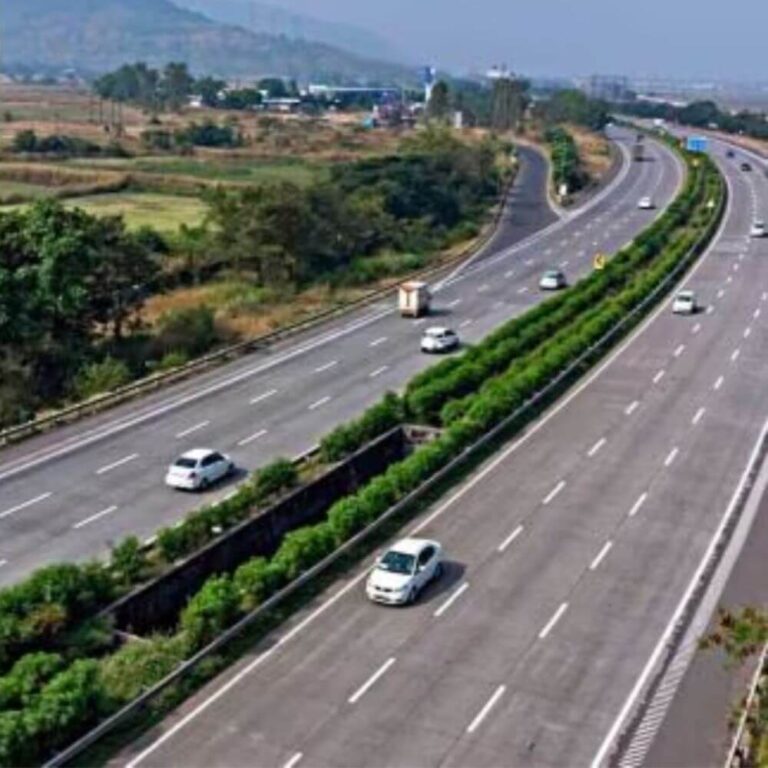
Recall Char Dham project in fragile Uttarakhand: BJP veterans
Veteran Bharatiya Janata Party (BJP) leader Murli Manohar Joshi and former Union minister Karan Singh have sought a “review and recall” of the apex court’s 2021 judgment which allowed widening of roads under the Char Dham project to 12 metres, reports The Indian Express. Alleging that it has resulted in massive landslides and sinking zones, their letter to Chief Justice of India BR Gavai, reads: “In a valley that has just witnessed a severe avalanche that buried hundreds of people, sacrificing trees that arrest these avalanches, is tantamount to a crime as it directly threatens the lives of the residents in the valley and the tourists too”. The letter also appeals that the Bhagirathi eco-sensitive zone, which falls on the Uttarkashi to Gangotri route, should be spared of 12-metre-wide roads. This bypass, it added, will impact about 3,000 trees and 17 hectares of forest area while another stretch in the same valley proposes felling of 6,000 deodar trees.

India records 8 percent more than normal monsoon this year
The monsoon season technically ended on September 30 but certain parts of the country will continue to report rainfall for a couple of more weeks till the complete withdrawal of monsoon in mid-October, reports The Times of India. India reported 8 percent more than normal rainfall — fifth highest rainfall this year since 2001 and 38th highest since 1901. “Bihar, Arunachal Pradesh, Assam and Meghalaya saw deficient rainfall in three of the four monsoon months. The lowest rainfall in the monsoon season in the region was recorded in 2013,” said IMD chief Mrutyunjay Mohapatra. He added: “Rainfall over east and northeast India has been deficient for many years in recent times. There is a trend that shows that the rainfall over this region has decreased in the last 20 years.” The ‘above normal’ monsoon season was marked by many disasters such as cloudburst, landslides, floods and mudslides, specifically in northwest India (Uttarakhand, Himachal Pradesh, Punjab and Jammu and Kashmir).

Earthquake in Philippines kills 72, Bogo city worst hit
At least 72 people were killed and almost 150 injured when a magnitude 6.9 earthquake struck off the coast of central Philippine island province of Cebu, reports Al Jazeera. Bogo city in Cebu, which has about 90,000 residents, was the worst hit with more than 20 confirmed deaths including four children. Several residential properties and commercial buildings were badly damaged. Radyo Pilipinas, a radio station owned by the Presidential Broadcast Service, showed images of how the earthquake had reduced a 139-year-old church in Daanbantayan, north of Bogo, to debris. The Philippines lies in the Pacific Ring of Fire, a tectonic belt of volcanic arcs and oceanic trenches in the Pacific Ocean, making it prone to mild earthquakes and volcanic activity. The United Nations, through its Anticipatory Action Pilot Programme, has also been working with the government to empower local communities to respond to earthquakes and other natural disasters.
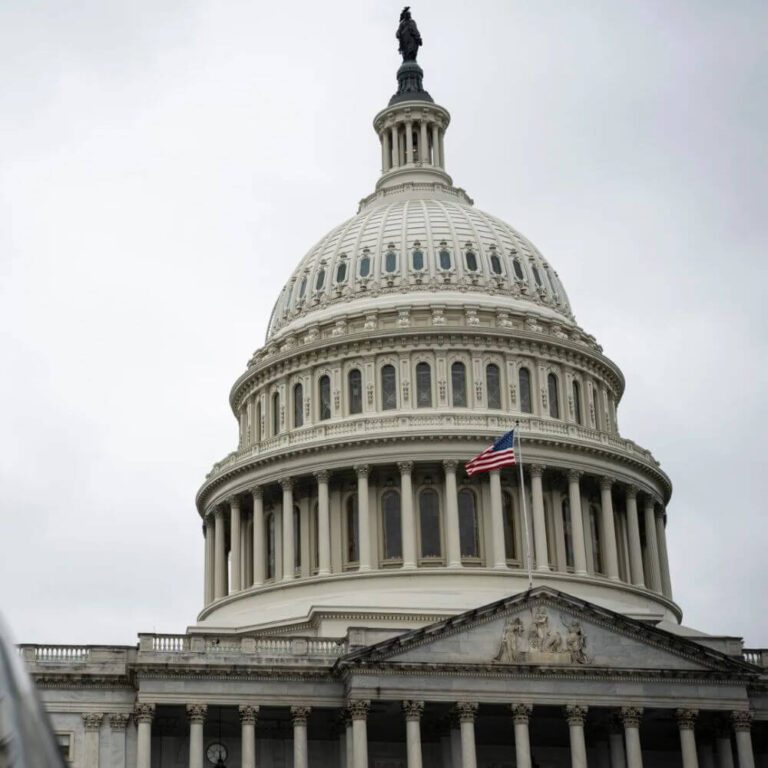
US government closure to halt climate, environment work
The closure of the federal government will curtail or halt some US climate disaster preparedness and environmental work including the National Flood Insurance Program, reports Bloomberg. From flood insurance to environmental grants, programmes that support resiliency in the face of natural disasters are expected to be cut back. The Environmental Protection Agency will be significantly impacted by the shutdown, with nearly 90 percent of its staff being furloughed and a halt to research, publication, and issuance of guidance, rules, and policies. The National Oceanic and Atmospheric Administration will require nearly half its current workforce to stay on the job since they perform essential public safety services. If funding lapses, the National Weather Service will continue to provide forecasts and issue safety warnings “as normal,” spokesperson Erica Grow Cei said in an email. That will be the case for two tropical storms which are churning up high surf, but aren’t expected to make landfall in the US.
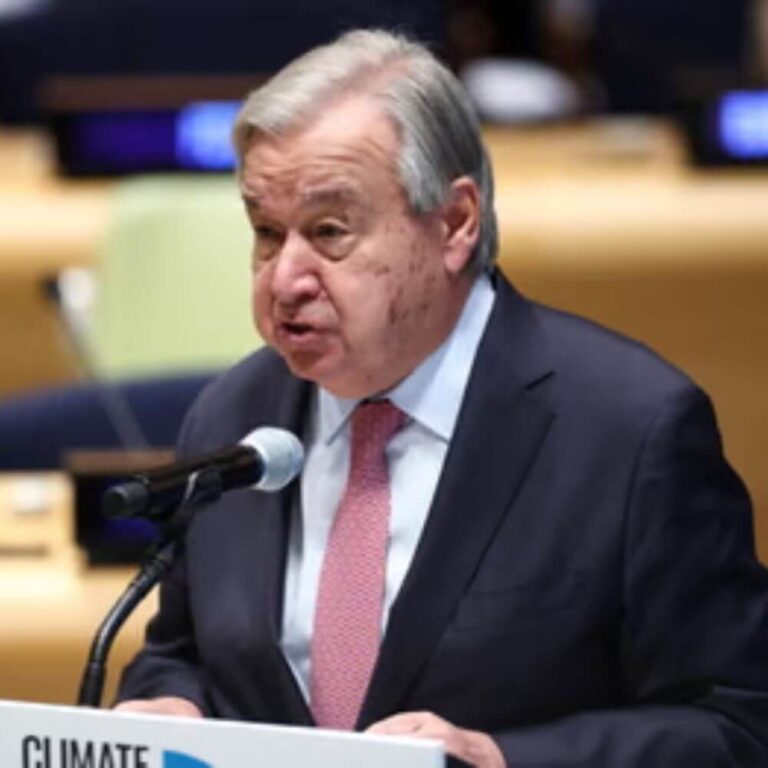
Leaders unveil new targets to cut planet-heating pollution
After US President Donald Trump called the climate crisis a ‘con job’, 120 countries and the European Union announced new goals to reduce greenhouse-gas emissions in New York, reports The Guardian. The pledges most notably include one from China, the world’s leading emitter, which said it would cut emissions by 7-10 percent from its peak level by 2035. On September 24, António Guterres, the UN Secretary General, convened the special summit for the new goals and urged countries, most of which are badly lagging in efforts to avoid breaching agreed temperature limits, to enact “much further, much faster” cuts. Currently the planet is set to vastly exceed the 1.5 degrees Celsius warming limit agreed a decade ago in Paris, with temperatures set to rise by as much as 3 degrees Celsius (5.4F) beyond the pre-industrial average, triggering catastrophic consequences for many countries. This stuttering global effort has been further imperiled by the actions of the US, the world’s largest historic emitter of carbon pollution.
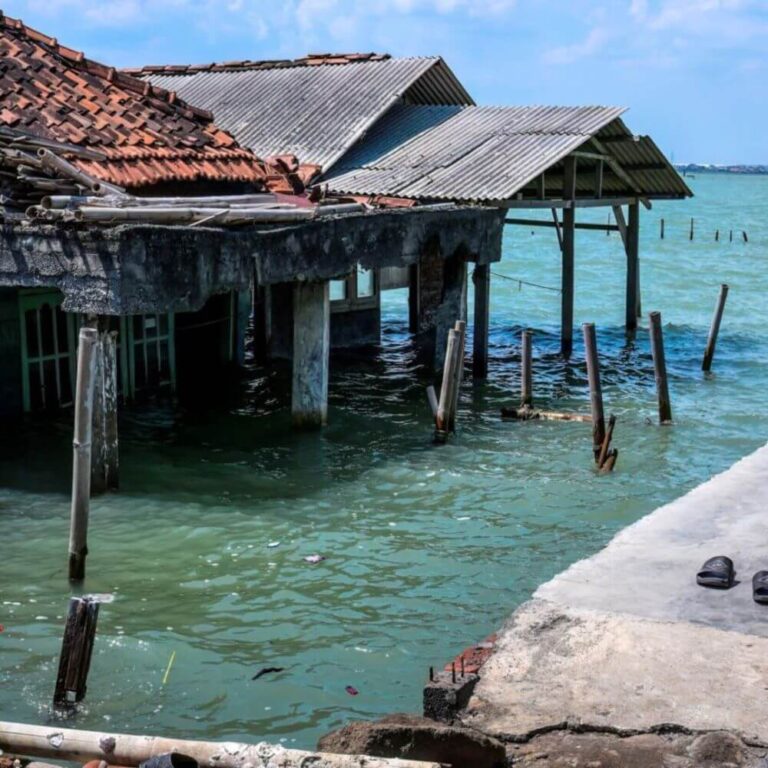
‘Efforts to cap climate warming at 1.5 Celsius are failing’
Less than two months before the COP30 meeting in Brazil, dozens of countries have been slow to announce their climate action plans — particularly China and the European Union, powers considered pivotal for the future of climate diplomacy, reports France 24. Efforts to combat the impact of man-made global warming have taken a back seat to myriad crises in recent years that have included the coronavirus pandemic and several wars, with UN Secretary General Antonio Guterres seeking to reignite focus on the issue. “We absolutely need countries to come… with climate action plans that are fully aligned with 1.5 degrees Celsius, that cover the whole of their economies and the whole of their greenhouse gas emissions,” he said, “It is essential that we have a drastic reduction of emissions in the next few years if you want to keep the 1.5 degrees Celsius limit alive.”
September 19, 2025
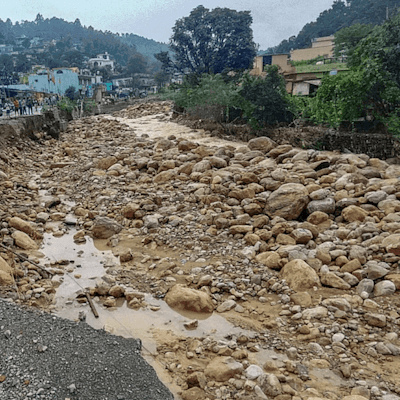
Uttarakhand downpour claims 17 lives, rescue ops on
At least 17 people died in the heavy downpour in Dehradun and at various places in Uttarakhand, reports The New Indian Express. Torrential rains began on September 15 night and caused widespread destruction, washing away roads, bridges, and homes, and turning rivers into raging torrents. In Dehradun, rainfall was particularly intense in Sahastradhara, which recorded 192 millimetres, followed by Maldevta with 141.5 millimetres. Hathi Barkala and Jolly Grant received 92.5 millimetres each, while Kalsi recorded 83.5 millimetres. The bridge near Nanda ki Chowki on the Dehradun-Paonta National Highway was washed away, halting traffic, and the Mussoorie-Dehradun road is closed at multiple points due to extensive landslides. Around 200 students were trapped by waterlogging at the Devbhoomi Institute campus in Paundha, Dehradun, prompting SDRF teams to launch a swift rescue operation.
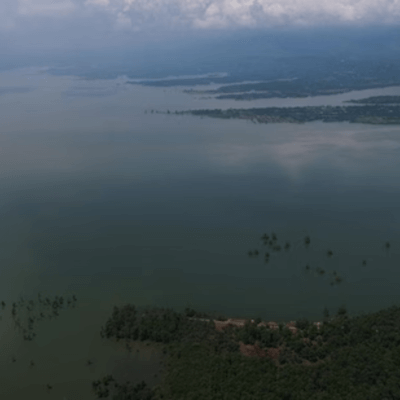
SC to extend Himanchal ecological issues to all Himalayan states
Concerned over the developments in the past few years, the Supreme Court, on September 15, expanded its examination of ecological issues in Himachal Pradesh to all Himalayan states, reports The Hindustan Times. Senior advocate K Parmeshwar, amicus curiae, took the court through the response filed by the Himachal Pradesh government on August 23. A bench of Justices Vikram Nath and Sandeep Mehta said, “It is extremely sad there is one more incident (of cloudburst) in the state after this matter was taken up on July 28. We will not limit this matter to Himachal Pradesh alone but the entire Himalayan states. This year the effect is very violent.” The response of the state admitted that “there are shortcomings in the existing measures,” to emphasise the need for their identification, and to formulate a comprehensive future action plan to address the disastrous situations witnessed in recent years, the state proposed constituting a “core group” of experts to submit a roadmap.
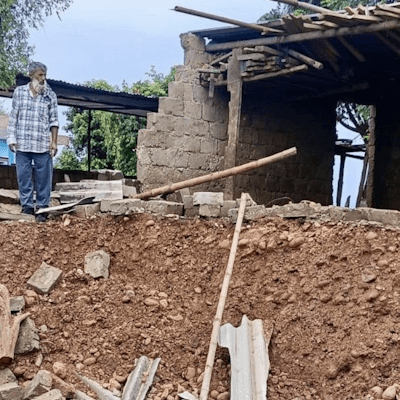
Jammu village land subsidence blamed on ring road project
Kheri, an old and hilly village nestled some 15 kms from the main city of Jammu in the foothills of Shivalik range of mountains, is experiencing land subsidence, reports The Wire. With the land continuing to sink even after the heavy rainfall has subsided, around 200 families with small land holdings are living in constant fear of losing their homes and livelihoods. An official, who didn’t want to be named, said that more than 1.5 square kilometres area in Kheri has been affected by land subsidence. Local residents have blamed the flooding on the “poor planning” of the Jammu Ring Road project as it passes along Manguchak village. Eight major bridges and six flyovers are being built and several kms of mountain cutting has been undertaken to lay down the 58.25 kilometre-long road network around Jammu city. According to official estimates, around 12,000 kilometres of road length has suffered damage across the Union Territory due to the flooding caused by torrential rains.

Football World Cup venues at high risk of extreme heat stress: Report
The Pitches in Peril report, published by Football for Future and Common Goal, found that 10 of the 16 venues for the 2026 World Cup are at very high risk of experiencing extreme heat stress conditions, reports The Guardian. It found 14 of the 16 World Cup stadiums in the US, Canada and Mexico exceeded safety thresholds in 2025 for at least three major climate hazards – extreme heat, unplayable rainfall and flooding. By 2050, nearly 90 percent of North America’s host stadiums will require adaptation to extreme heat while one third will face water demand equalling or exceeding supply. The report, which delivers the first IPCC-aligned climate risk assessment of all 2026 World Cup venues, also highlighted risks to 2030 and 2034 World Cup venues – the tournament will be co-hosted by Morocco, Spain and Portugal in 2030 and Saudi Arabia in 2034 – and examined the impact of a warming climate on the grassroots pitches.
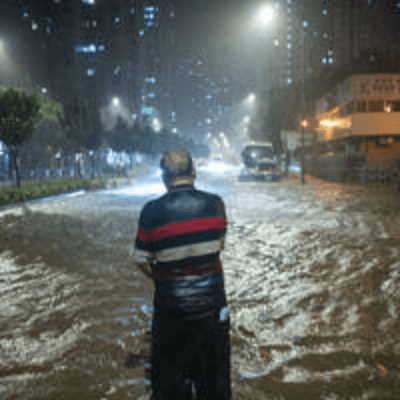
Hong Kong upgrades its response to natural disasters
After extreme rainfall wreaked havoc in Hong Kong in 2023, billions have been invested to keep the full wrath of natural disasters in check, reports Bloomberg. That vital but little-known work began decades earlier, long before climate risks entered the public consciousness. Much of Hong Kong is densely packed and perched on, or built at the foot of, steep slopes. The city averages 2,400 millimetres (94.5 inches) of precipitation annually — nearly double what New York City gets — and tropical rain is notoriously hard to predict. As a coastal city, storm surges and rising sea levels put additional stress on its drains. While large-scale engineering projects will still form the “first line of defence” against inundations — the department currently has HK$17.1 billion budgeted for 15 stormwater drainage projects — temporary and non-structural measures will be crucial for the city’s resilience, said Ringo Mok, director of the Drainage Services Department.
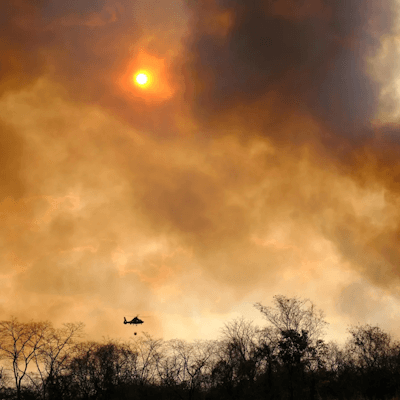
Preserving the Amazon keeps communities safe from health risks: Study
A new research suggests that preserving the Amazonian forests helps to protect millions from disease, reports The Guardian. Analysing 20 years of data on 27 diseases – including malaria, Chagas disease and hantavirus – researchers found that municipalities in the Amazon biome near healthy forests on Indigenous lands across eight countries faced a lower risk of disease. The study reveals a reduction in respiratory and cardiovascular problems linked to wildfire smoke, as well as diseases spread when deforestation brings humans into closer contact with animals and insects. Ana Filipa Palmeirim, at the Federal University of Pará in Brazil and co-author of the study, says: “Even when fires take place in remote forest areas, winds spread the pollution far and wide, creating deadly public health emergencies.” Scientists estimate they cause thousands of premature deaths from lung cancer and cardiopulmonary disease. With the Cop30 UN climate summit slated to take place in Brazil this November, researchers hope the study will be an impetus for international collaboration.
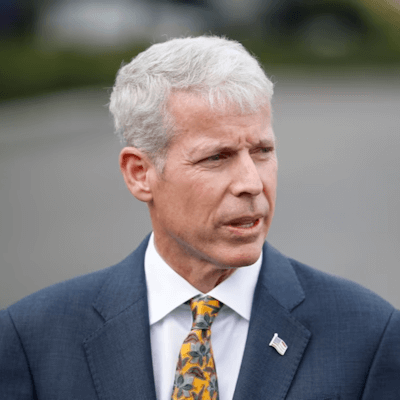
Trump Group that authored controversial climate report disbanded
After more than 100 climate scientists submitted over 400 pages in public comments to the US Energy Department, the group that authored the report questioning the scientific consensus on the severity and impacts of climate change, was dissolved, reports CNN. The report generated concerted pushback from the scientific community and a lawsuit by the Environmental Defense Fund and Union of Concerned Scientists alleging the group’s formation violated the Federal Advisory Committee Act in several ways. Though the group has been disbanded, the Department of Energy will not withdraw the report it authored, which sparked resistance across the climate science community and stirred a coordinated response during the required public-comment period. Andrew Dessler, a climate researcher at Texas A&M University who helped organise the public comments to push back against the report, said he believed the dissolution means there will be no such debate, nor an official point by point rebuttal from the Trump administration.
September 5, 2025

Heavy rains, flash floods in north India leave trail of destruction
Flash floods triggered by cloudbursts in the past few days have wreaked havoc in Jammu and Kashmir, Punjab, and Uttarakhand, reports India Today. More than 50 people died in Jammu and Kashmir in the past fortnight as heavy rain and flash floods destroyed houses. The Jammu-Srinagar Highway was closed for at least eight days. Land sinking was reported in Rajouri and Samba districts on September 1 after incessant rain, prompting authorities to evacuate. Heavy rains in Uttarakhand claimed 10 lives and at least 69 people remained missing after a series of cloudbursts in August, triggering landslides and flash floods. Punjab saw its worst floods in decades with over 29 dead, thousands displaced, and lakhs of acres of agricultural land. In Delhi and its adjoining National Capital Region (NCR), water level in the Yamuna breached the danger level.
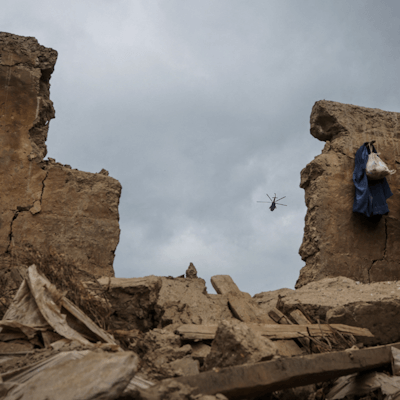
At least 2,200 dead in Afghanistan earthquake, rescue ops on
After a magnitude 6 earthquake hit parts of Afghanistan on the night of August 31, rescue workers continued pulling bodies from the rubble as the confirmed death toll topped 2,200 (on September 4) and left more than 3,640 injured, reports Reuters, adding that survivors faced a bleak future with global aid agencies warning of dwindling resources. The quake, one of Afghanistan’s deadliest in recent years, unleashed widespread destruction in the provinces of Kunar and Nangarhar, when it struck at a shallow depth of 10 kilometres. A second quake of magnitude 5.5 on Tuesday interrupted rescue efforts and cut off roads to villages. More than 6,700 homes have been destroyed, authorities said. Humanitarian needs are “vast and growing rapidly”, said the International Federation of Red Cross and Red Crescent Societies. “Up to 84,000 people are directly and indirectly affected, with thousands displaced,” they added, citing initial figures.
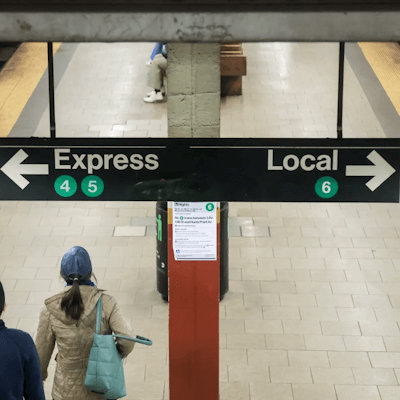
How public transit is safer than auto travel
Despite common assumptions, travelling by bus, subway or train is far safer in the United States than driving, reports Bloomberg. Driving seems safer than getting on a bus or climbing down into a subway station; motorists have a sense of control and feel protected in their vehicles. But major transit crashes and crimes are infrequent, so they receive considerable coverage; since automobile crashes and crimes are hundreds of times more common, they receive far less media attention. In a city like New York — a global media hub that’s also full of transit riders — that message gets boosted further. As a result of distorted information, most people underestimate driving’s dangers and transit’s safety. In fact, automobile travel has about ten times the death rate as public transit, and transit vehicles also impose less risk on non-occupants like cyclists, pedestrians and other road users.
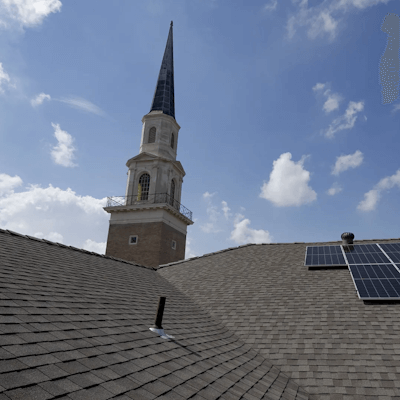
Hurricane Katrina strengthens community disaster preparedness
Twenty years later, Katrina remains one of the most destructive storms in US history, costing $161 billion in damages and displacing millions of people, reports Bloomberg. Recovery was incomplete: While the city’s tourism industry is larger than ever, its population is down by some 100,000 people, and its demographics have shifted, with fewer Black residents. The recovery process exacerbated racial injustices that existed earlier: Aid programs from the Federal Emergency Management Agency (FEMA) were rife with racial discrimination, as funds ended up mostly to higher-income homeowners and not to residents of the low-income and predominantly African-American areas that bore the brunt of the storm’s damage.

Trump Energy Dept’s climate report lacks integrity: Scientists
A group of 85 scientists said the Trump Energy Department’s recent climate assessment used to justify an unwinding of federal greenhouse gas rules does not meet standards for scientific integrity, reports Reuters. The assessment was written by five scientists, handpicked by Energy Secretary Chris Wright, who stated that the mainstream climate science relied heavily on debunked research, misinterpreted other research, and failed to undertake a peer-review process to ensure the assessment was credible. The report by Wright’s Climate Working Group, they said, “fails to adequately represent the current scientific understanding of climate change”. Andra Garner, a climate scientist who participated in the review, explained: “The report is intended to support a specific policy decision and is not an unbiased synthesis of climate science.”

Climate change makes life unbearable for the poor in Hong Kong
Tens of thousands of Hong Kong residents remain sardined into homes smaller than a parking space, where staying cool is a luxury few can afford as the climate warms, reports CNN. An estimated 2,20,000 people live in subdivided units, “cage homes”, or illegal rooftop flats. Many units are poorly ventilated, windowless, and infested with cockroaches, rats and bed bugs. Constructed with basic building materials such as sheet metal, these homes become abnormally hot during the day and trap heat well into the night. Indoor temperatures in such flats reach as high as 41 degrees Celsius, even when it is cooler outside. According to a survey, 83 percent of residents in subdivided homes reported sleep problems, while 60 percent experienced emotional instability, more than half had skin conditions, and about a third reported dizziness.

Community engagement leads to smarter, effective governance
As fiscal conditions grow more challenging and people’s wariness of the public sector grows, governments must resist the urge to pull back from engagement, and instead they should deepen it, write Jed Herrmann and Sarah Beth Gehl in the Op-ed in Next City. As a result of several laws, state and local governments had access to unprecedented levels of federal funding. Encouraged by federal guidance, many governments used this opportunity to test new models of engagement such as participatory planning, cross-sector advisory groups, multilingual consultations and more. Effective public engagement elevates priorities that traditional performance metrics may overlook, residents’ feedback can spotlight high-impact programmes, and inclusive partnerships allowed Tucson, Arizona, and Tampa Bay, Florida to form nonprofit networks that co-led climate resilience planning and sustained public participation beyond early project phases.
August 22, 2025
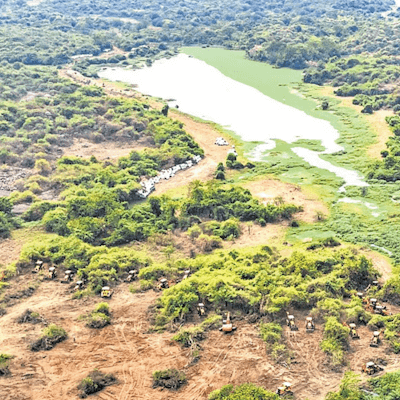
SC gives Telangana six weeks to replant axed trees in Gachibowli
The Supreme Court, on August 13, granted six weeks to the Telangana government to work out with a “good proposal” for holistic restoration of the Kancha Gachibowli forest site, reports The New Indian Express. Ordering the state government to replant the uprooted trees, a bench of Chief Justice BR Gavai and Justice K Vinod Chandran said, “The court is not against development but development has to be sustainable. While carrying out development activities, the interest of the environment and wildlife has to be taken care of by ensuring mitigating and compensatory measures.” The apex court, while taking suo motu cognisance of the felling of trees across 400 acres at Kancha Gachibowli for IT infrastructure in April, reiterated that it was not against development but the environment needs to be protected.
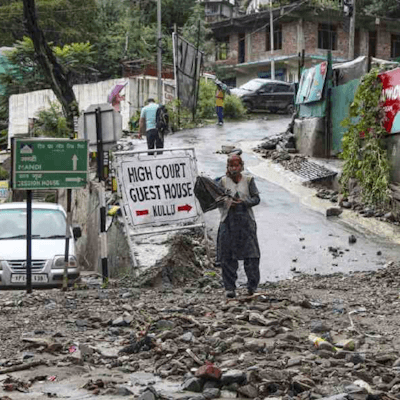
Flash floods, landslides in Himachal damage houses and shut roads
Torrential rains lashed parts of Himachal Pradesh disrupting life in Una, Kullu and Mandi districts, reports The Telegraph. In Kullu, flash floods in the Nallah in Shastri Nagar damaged houses and vehicles, triggering panic among locals. On August 18 night, following incidents of cloudbursts, flash floods and landslides a foot bridge in Silbhudhani village of Mandi district was washed away. A total of 362 roads, including three national highways, were closed for vehicles on Wednesday morning. Among these, 183 roads were closed in Mandi district and 105 in the adjoining Kullu, the State Emergency Operation Centre (SEOC) informed. Bharwain in Una recorded the highest rainfall of 68 millimetres followed by 63.4 millimetres in Dehra Gopipur. The state has witnessed 74 flash floods, 38 cloudbursts and 72 major landslides so far. Around 143 people have died and 37 are missing.
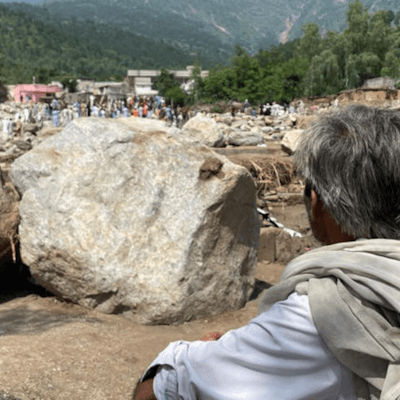
Flood fury devastates north Pakistan, hundreds dead
At least 507 people died and more than 700 were injured in rain-related incidents in Pakistan since the monsoon started in late June, reports the BBC. Across the wider province of Khyber Pakhtunkhwa, at least 314 people were killed and 156 injured due to rains and flash floods between August 14 and August 15 night. Buner district is the worst-affected, with 217 fatalities, according to the Provincial Disaster Management Authority. An estimated 50 percent of the houses have been completely destroyed in the flood. The rest are no longer habitable. While the exact cause of the recent floods and landslides are yet to be determined, glaciologists say that ice melt is a contributing factor. Global warming is causing these glaciers to quickly thin and retreat, in turn making debris such as rocks, soil and other materials more vulnerable to being dislodged.
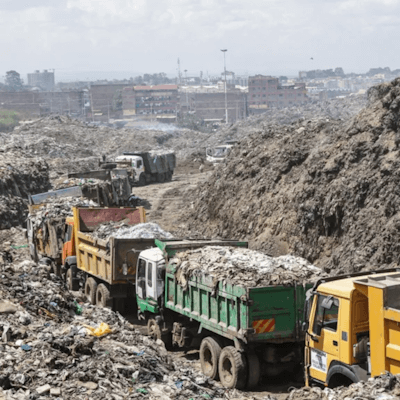
Plastic treaty talks fail again as countries remain divided
The UN negotiations on August 15, the sixth round of talks in just under three years, failed to break a deadlock to develop a treaty to end plastic pollution, reports the BBC. There remained a split between a group of about 100 nations calling for curbs on production of plastic, and oil states pushing for a focus on recycling. The core dividing line between countries has remained the same throughout: whether the treaty should tackle plastics at source – by reducing production – or focus on managing the pollution that comes from it. The largest oil-producing nations view plastics, which are made using fossil fuels, as a vital part of their future economies, particularly as the world begins to move away from petrol and diesel towards electric cars. Countries had an original deadline to get a deal over the line at the end of December last year, but failed to meet this. The collapse of the latest talks means they fall further behind.
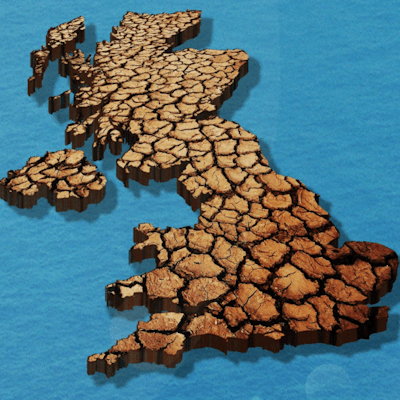
How rainswept England is running out of water
On August 12, the United Kingdom announced a “nationally significant” water shortage in England, which means the whole country is at risk of running out if the dry weather continues, reports The Guardian. The use of hosepipes has been banned. The UK Centre for Ecology and Hydrology, an independent research institute, has warned of exceptionally low river flows. Reservoirs are also at extremely low levels and groundwater is dwindling. Forecasts indicate that by 2055 England’s public water supply could be short by 5billion litres a day, the equivalent of more than a third of today’s supplies. The effect on the economy will be profoundly negative. The thinktank, Public First, estimated the economic cost of water scarcity at £8.5billion. As Sir David King, a former UK chief scientific adviser who chairs the Climate Crisis Advisory Group, says: “Drought in England is no longer a warning. It is a clear signal that climate collapse is unravelling our water, food and natural systems right now.”
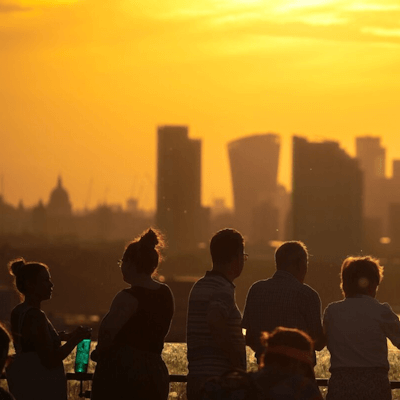
England’s minority-ethnic areas 15 times more likely to face extreme heat
An analysis by Carbon Brief shows how those subject to the “urban heat island” effect in English cities, often in low-quality housing and with little access to green space, are more likely to experience extreme heat, reports Carbon Brief. The analysis of 10 percent worst-affected neighbourhoods show they have a heat hazard score of 4 or 5, meaning that they face higher exposure to heat than 90 percent of areas around the country. As greenhouse gas emissions and global temperatures rise, more people in the UK are likely to become ill or even die due to extreme heat. Heat has killed around 6,000 people in England over the past three years, according to government figures. Scientists have repeatedly linked extreme heat – and the resulting deaths – to climate change. The analysis combines satellite data on heat exposure with data on per-capita emissions, ethnicity and levels of deprivation across England.
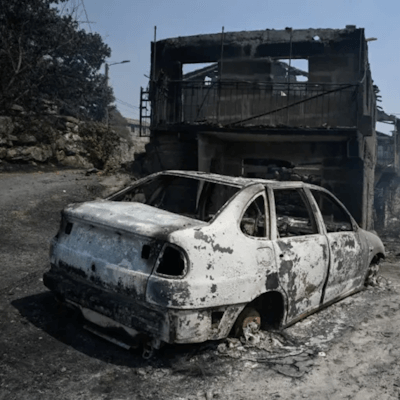
Wildfires in Spain, Portugal and Greece intensify amid heatwave
Wildfires in Spain this year have already burned 1,58,000 hectares (3,90,000 acres), an area the size of metropolitan London, reports Al Jazeera. Spain faced 14 major fires on August 15, said Virginia Barcones, the emergency services chief. The fires raging across Portugal caused a first fatality on Friday, when the former mayor of the eastern town of Planta died fighting fires. Almost 4,000 firefighters battled seven active fires in Portugal. The State Meteorological Agency placed most of the country under extreme fire danger alerts, particularly in the north and west, where the largest blazes raged. The heatwave saw temperatures topping 40 degrees Celsius (104 degrees Fahrenheit) on several days in August. Greece continued to struggle with a major wildfire burning for four days on the island of Chios, forcing several overnight evacuations as flames spread through the island’s northern region.
August 8, 2025
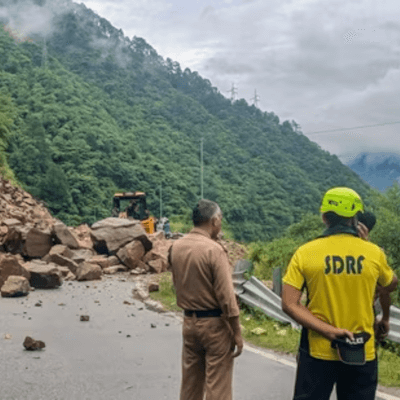
People, homes washed away in Uttarkashi flash floods, many missing
Two cloudbursts in Dharali and Sukhi Top in Uttarkashi, Uttarakhand, unleashed chaos across the region on August 5, with Dharali village facing the worst impact, reports Hindustan Times. Visuals from the area showed widespread devastation as muddy torrents tore through settlements, almost erasing the village. The death toll in the deadly cloudburst and flash floods rose to five on August 6 but over 100 were reported missing. According to officials, around 20–25 hotels and guesthouses were washed away, and large portions of the Dharali market were “completely swept away” too. The flash floods were triggered after a cloudburst in the Kheer Ganga catchment, followed by mudslides in the Kheer Gadh area. Personnel from the Indian Army, State Disaster Response Force (SDRF), and local police kept up the rescue operations despite relentless rainfall and the rugged terrain hampering operations.
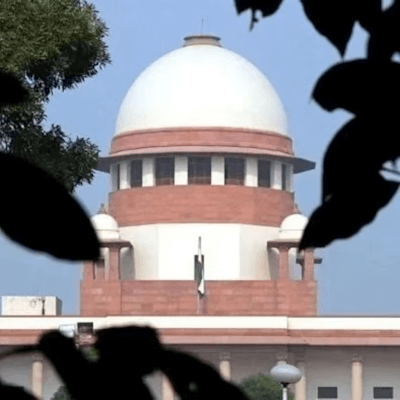
Nature is annoyed with activities going on in Himachal: SC
Taking serious note of hundreds of people dying in floods and landslides, and thousands of properties destroyed in Himachal Pradesh, the Supreme Court of India said that climate change is having a visible and alarming impact on the state. Deccan Herald reports that the bench of Justices JB Pardiwala and R Mahadevan stated, “Nature definitely is annoyed with the activities which are going on in the state of HP.” The state has been witnessing rising average temperatures, shifting snowfall patterns, and an increase in the frequency and intensity of extreme weather events. “The severe ecological imbalance and other environmental conditions have led to serious natural calamities over a period of years. We expect the state to file an appropriate reply explaining whether they have any action plan to meet with the issues and what they propose to do in future,” the bench said.

India strides towards green energy transition
This year, India is likely to overtake the United States and China as a clean energy superpower, reports Bloomberg. Easing inflation has allowed the Reserve Bank of India to cut its policy rate by a percentage point since December to the lowest in three years. This reduces the price of renewables, which are particularly exposed to debt costs. Regulatory deadlines have also played a role: A waiver on transmission charges for wind and solar expired at the end of last month, causing developers to rush to complete their builds in time to get the financial benefit. Rising incomes mean the government needs to also think about the needs of roughly half a billion middle-class citizens. Renewable power isn’t just cleaner — it’s cheaper, and more suited to the aspirations of the billions in the Global South who want a better, healthier life.

Indian rappers put musical spotlight on environment, caste
In recent years, a handful of Dalit and Adivasi rappers have broken into the mainstream, using their music to challenge caste hierarchies, critique government policies, and spotlight social injustices, reports Grist. Among them are Madhura Ghane, known by her stage name Mahi G, and Arivu, who are often making music that challenges the political establishment including on environmental issues. Arivu shot to fame with his track “Anti-national,” a bold critique of the Indian government, and, in another song, laid bare feudalism and its contemporary manifestations while paying homage to his grandmother, a landless labourer in a tea plantation. Mahi G’s music highlights the experiences of Dalits and Adivasis, has compelled people to think about the environment, and helped them realise that they don’t want industrialisation that destroys forests, she said.

No voices against erasure of Gaza’s built and natural environment
While journalism, higher education, the film, music and food industries, and countless other professional institutions have been at the heart of both activism and free-speech crackdowns around Palestine, the corporate urbanism space has failed to speak up against, let alone coherently address, the urbicide and historicide in Gaza, writes London-based urban planner Katie Mulkowsky in Next City. Israel has systematically and publicly demolished all civic infrastructure in Gaza: homes, hospitals, mosques, churches, schools and universities, public squares and playgrounds, libraries, critical habitats, archaeological and heritage assets, power and communications networks, and systems for food, water and sanitation. It has wiped out generations of people. It is urgent that urban planning institutions take a coherent stand in condemning Israel’s ongoing genocide in Gaza—not only as an intellectual exercise but as a concrete pledge.

Nordic countries reel under heatwaves, temperatures cross 30 degrees Celsius
Finland, Norway, Sweden and northern Europe recorded high temperatures in July with heatwaves continuing for more than 12 days at a stretch, reports The Guardian. A weather station in the Norwegian part of the Arctic Circle recorded above 30 degrees C (86 degrees F) on 13 days in July, while Finland has had three straight weeks with 30 degrees C heat. Scientists say it is the longest streak in records going back to 1961 and 50 percent longer than the previous record. The Norwegian Meteorological Institute said the temperatures were recorded on 12 days in July by at least one station. In Sweden, meteorologists said long-term heatwaves were noted at several stations in the north of the country, with a weather station in Haparanda measuring 25 degrees C or more for 14 days in a row. In Jokkmokk, Lappland, the heatwave lasted for 15 days. On July 30, an ice rink in northern Finland opened its doors to people seeking refuge from the heat after they overfilled the local hospital’s emergency room.
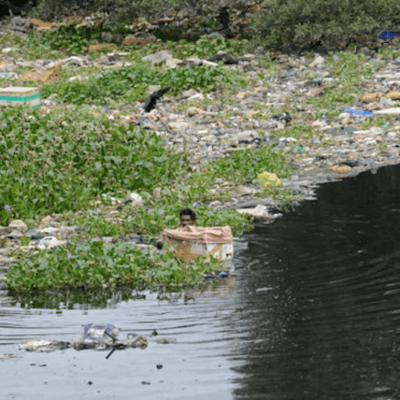
Plastic causing $1.5tn health-related damages a year: Report
A review in the Lancet says the world is in a “plastics crisis”, which is causing disease and death from infancy to old age and is responsible for at least $1.5tn (£1.1tn) a year in health-related damages, reports The Guardian. Plastic production has increased more than 200 times since 1950 and hits health at every stage from extraction to disposal. This is set to almost triple again to more than a billion tonnes a year by 2060. Plastics endangered people and the planet at every stage, the review said, from the extraction of the fossil fuels they were made from, to production, use and disposal. This results in air pollution, exposure to toxic chemicals and infiltration of the body with microplastics. Plastic pollution can even boost disease-carrying mosquitoes. Petrostates and the plastics industry have argued the focus should be on recycling plastic, not cutting production. But, unlike paper, glass, steel and aluminium, chemically complex plastics cannot be readily recycled.
July 25, 2025
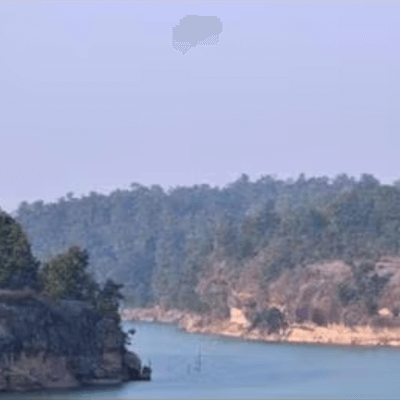
3,68,000 trees in Chhattisgarh’s Hasdeo to be affected by mining project
The Parsa East Kente Basan (PEKB) coal mining project in Chhattisgarh’s Hasdeo Arand, will affect more than 3,68,000 trees, minister of state for environment Kirti Vardhan Singh told Lok Sabha on Monday, reports Hindustan Times. Communist Party of India (Marxist–Leninist) Liberation lawmaker Raja Ram Singh from Bihar asked whether the government was aware that over 200,000 trees had been felled for the Adani Enterprises project. He sought details of the felling, whether environmental clearance was granted, and the reasons for permitting extensive deforestation in a biodiversity-rich forest despite the climate crisis. Among India’s last remaining old-growth forests, Hasdeo Arand is one of the largest contiguous stretches in central India, spanning 1,70,000 hectares and has 22 coal blocks underneath it.

Climate change increases flash floods hotspots in India: Study
A study, Drivers of Flash Floods in the Indian Subcontinental River Basins, by IIT Gandhinagar finds that flash flood hotspots are expanding beyond traditionally vulnerable zones into drier and semi-arid regions, reports The New Indian Express. The study observed a marked rise in flash floods across semi-arid zones of western India, regions previously seen as low-risk from the risk of flash floods. It attributes this shift to an increase in sub-daily precipitation events and rising temperatures, which allow the atmosphere to retain more moisture and trigger intense rainfall. The study notes that the areas currently classified as highly susceptible to flash floods are seeing a reduction in precipitation and streamflow, indicating a potential future shift in flood hotspots.

India’s climate finance taxonomy to aid inclusive growth, just transitions
When the Government of India released a Draft Climate Finance Taxonomy in June 2025, it sought to provide a common language and a credible yardstick to define and measure climate-positive investments, reports Down To Earth. In doing so, it would help guide public and private financial institutions in aligning their portfolios with India’s nationally determined contributions (NDCs) and broader climate goals. The taxonomy aims to define what truly qualifies as “climate-aligned” financial activity in the Indian context. This initiative, though overdue, is critical for channelling capital into the right sectors and projects as India eyes a $10 trillion economy while staying on course with its net-zero commitments.

Top UN court landmark ruling puts heat on Australia
The International Court of Justice on July 23 said countries must address the “urgent and existential threat” of climate change, reports Reuters. It said that wealthy countries must comply with their international commitments to curb pollution or risk having to pay compensation to nations hard hit by climate change. Judge Yuji Iwasawa said that national climate plans must be of the highest ambition and collectively maintain standards to meet the aims of the 2015 Paris Agreement. https://www.reuters.com/sustainability/cop/top-un-court-says-treaties-compel-wealthy-nations-curb-global-warming-2025-07-23/ Failure to do so could result in developed countries like Australia having to pay monetary compensation to developing countries or being required to rebuild infrastructure and restore ecosystems damaged by climate change, says The Guardian opinion piece.
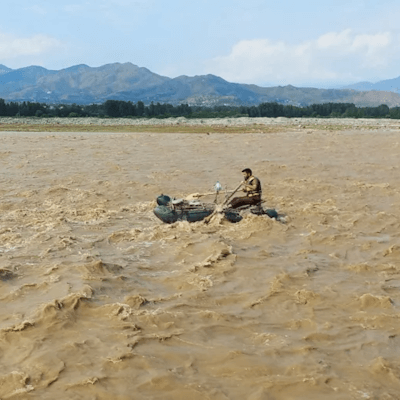
Pakistan sees worrying trend of urban flooding
The National Disaster Management Authority’s (NDMA) latest report revealed that a total of 124 people, including 63 children, died in Pakistan because of climate-related incidents since June 26, reports Al Jajeera. Pakistan, which has a population in excess of 250 million, is one of the world’s most vulnerable countries to climate change. It has experienced repeated environmental disasters, most notably the devastating floods of 2022, which killed nearly 1,700 people and displaced more than 30 million nationwide, who lost their homes and livestock or suffered crop damage or losses. Pakistan’s government blames the lack of assistance from the international community in urgently addressing the climate emergency but some experts say the government’s inaction has compounded the current situation.
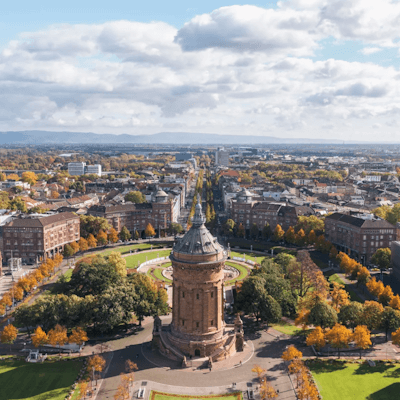
Women’s safety: German cities launch subsidised night cab rides
As violence against women rises, several cities in Germany have launched night cab voucher programs to give women a safer way home, reports Bloomberg. In Mannheim’s public safety perception survey, the most-cited reasons for fear were catcalling, gawking and verbal harassment by groups of men. Such experiences don’t just create discomfort; they reshape how women move through urban life — choosing to stay home, avoid public transport or pay out of pocket for safer-feeling alternatives. This growing anxiety has fuelled public support for night cab programs. Cologne’s 1,500 vouchers had been used up within days of their launch in late 2024. While countries ranging from India to the US have launched initiatives offering women-only taxi services, German cities are among the first globally to provide subsidies for women’s nighttime cab rides.

China reels under heat as high temperature days rise
The China Meteorological Administration said on July 23 that 152 national weather observatories in China have recorded temperatures over 40 degrees Celsius (104 degrees Fahrenheit) since mid-July, reports Al Jazeera. Last week, sweltering heat stretched from the densely populated city of Chongqing in the southwest of China to Guangzhou on the coast, enveloping an area that is home to more than 200 million people. This alerted the country’s power industry for timely response measures for a surge in power consumption. As the world’s second most populous country, China has been the biggest emitter of greenhouse gases annually since overtaking the United States in 2006. But it is also a global renewable energy powerhouse that aims to make its massive economy carbon-neutral by 2060.
July 11, 2025

Landslides, flash floods, cloudbursts claim 80 lives in Himachal
At least 80 people lost their lives since June 20 as torrential rain pounded several parts of Himachal Pradesh, reports the Mint. Mandi district was the worst hit, accounting for 17 rain-related deaths. Around 52 fatalities were directly attributed to disasters such as landslides, flash floods, and cloudbursts, while 28 deaths were due to other causes, including road accidents, according to the State Disaster Management Authority. According to the State Emergency Operation Centre, 225 roads were closed, and 163 transformers and 174 water supply schemes were affected. A landslide hit Siyathi village, Dharampur, flattening around a dozen houses. Since the onset of the monsoon on June 20, Himachal Pradesh has witnessed 23 flash floods, 19 cloudbursts, and 16 landslides, and 52 people have died in rain-related incidents in the state so far.

Traditional weather forecast too affected by climate change
Since time immemorial, tribal communities of Jharkhand have kept track of the weather in their area through “signals of nature”, reports Down To Earth. Quite a few of these signals pertain to the monsoon, which is understandable considering the season’s importance in their rainfed agriculture practices. These traditional methods of weather predictions have begun to falter due to erratic rain patterns. “Nowadays, rains come early and recede before time, making prediction difficult. Paddy crops do not get adequate water and we are forced to grow hybrid varieties that require less water,” said Devi Mahto of Kumkuma village, Khunti. Rising temperature, too, has had an impact. “It seems our ecological knowledge is being challenged by nature itself,” said Suman Kujur, accredited social health worker (asha) facilitator for Raidih block, Gumla.
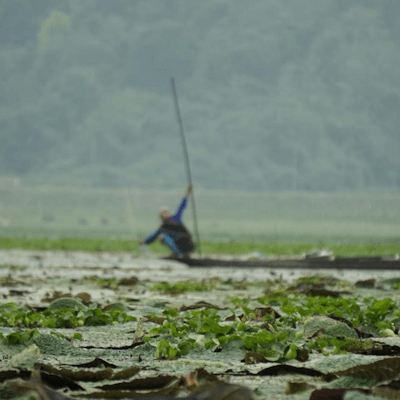
Duo turns invasive water hyacinth into chemical-free stationery
Two youngsters, Rupankar Bhattacharjee and Aniket Dhar, are turning water hyacinth into stationery at Kumbhi Kagaz in Guwahati, Assam. They are turning the invasive water hyacinth into compostable, chemical-free notebooks, journals, and calendars, reports The Hindu. In 2021, the duo won the UK-based WasteAid Zero Waste Cities Challenge – Guwahati, and soon after, bagged the Tide 2.0 title at Assam Downtown University Venture Labs and the India Pitch Pilot Scale Startup Challenge. At the brand’s Deepor Beel unit in Guwahati, the duo collaborated with a small group of farmers from the surrounding wetland and trained local artisans to participate in the paper production process. As they scale up, Aniket says their goal is to “democratise access to sustainable materials”.
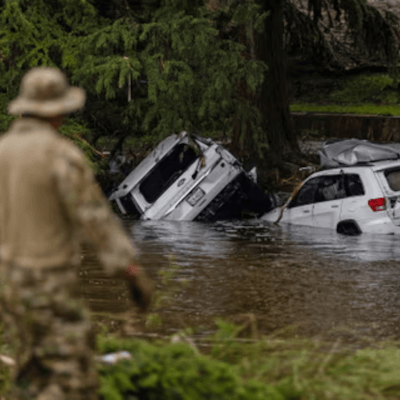
Texas flooding toll crosses 100, many still missing
The death toll from flash floods that struck central Texas on July 4 was at least 107 and an unknown number of others are missing, reports the BBC. Search and rescue teams are wading through mud-piled riverbanks as more rain and thunderstorms threaten the region. Camp Mystic, a Christian all-girls’ summer camp, confirmed at least 27 girls and staff were among the dead. Five campers and one adult are still missing. https://www.bbc.com/news/articles/c0j4eq517qyo A report in The Guardian says some parts of central Texas had several months’ worth of rain in just a few hours, while gauges in the unincorporated Kerr county community of Hunt, where Camp Mystic is located, recorded 6.5in (16.5cm) of rain in only 180 minutes. A preliminary estimate by the private weather service AccuWeather places the damage and economic loss at $18bn-$22bn. “Everyone in the community is hurting,” said Dalton Rice, the city manager of Kerrville. “We are seeing bodies recovered all over, up and down.”

Trump’s move will add 7bn tonnes of emissions until 2030
Since winning office last November, President Donald Trump has issued a series of executive orders and is poised to sign his “big beautiful bill” that effectively terminates Biden-era climate policies, reports Carbon Brief. The bill removes virtually all of the tax credits for renewable energy, electric vehicles and clean manufacturing that were at the core of Biden’s landmark Inflation Reduction Act (IRA). Trump’s dismantling of climate policy means the US will add an extra 7 billion tonnes of emissions to the atmosphere from now until 2030. Carbon Brief’s analysis of modelling from the Princeton University REPEAT Project shows that this means US emissions are set to drop to 3 percent below current levels by 2030 – effectively flatlining – rather than falling 40 percent as required to hit the now-defunct target.

Climate change triples heatwave toll in European cities: Study
World Weather Attribution, an academic collaboration studying extreme event attribution, found that human-driven climate change tripled the number of heat-related deaths, as it increased heatwave temperatures up to 4 degrees Celsius across a dozen cities, reports Earth.org. Researchers from Imperial College London and the London School of Hygiene & Tropical Medicine focused on data from June 23 to July 2 across 12 cities in Italy, Spain, Portugal, France, the UK, Greece, Croatia, and Hungary. A total of 2,300 heat-related deaths were recorded during the 10-day period. Of these, 65 percent would not have happened if climate change had not intensified the heatwave, they concluded. “While a handful of deaths have been reported in Spain, France and Italy, thousands more people are expected to have died as a result of the blistering temperatures and their deaths won’t be recorded as heat-related,” said Malcolm Mistry, Assistant Professor at the London School of Hygiene & Tropical Medicine and one of the study’s authors.
June 27, 2025

Crusaders join hands to save Jaipur’s Dol ka Badh
Hundreds of men, women, children, the elderly, social rights activists and youngsters formed a human chain in protest against the felling of around 2,500 trees in Dol ka Badh forest in Jaipur, reports India Today. Organised under the ‘Save Dol Ka Badh’ campaign, the protesters claimed that the cutting of trees in such large numbers could severely deplete the green cover and raise serious environmental concerns. The earmarked trees include the Khejri tree, considered an important constituent of the ecosystem. The state government, in partnership with the Rajasthan State Industrial Development and Investment Corporation (RIICO), is building the Prime Minister Unity Mall to showcase the tribal legacy. Protestors said that even if the project was limited to 30 acres of the 100-acre Dol ka Badh and an area with low tree density for the mall project, it might have been understandable.

NYC Democrats vote for Zohran Mamdani as mayoral candidate
Zohran Mamdani, 33-year-old democratic socialist, is the Democratic nominee for mayor of New York City after initial results forced his opponent Andrew Cuomo, the former governor of the state, to concede within hours after polls closed, Bloomberg reported. “Mamdani, who just months ago was an unfamiliar name to most New Yorkers, racked up commanding leads across Brooklyn, Queens and Manhattan, even pushing Cuomo close in what was meant to be his stronghold of the Bronx,” the report pointed out. Mamdani won with 43.5 percent of the vote in the first round of ranked-choice voting with Cuomo receiving 36.4 percent and city Comptroller Brad Lander coming in third with 11.3 percent. Mamdani’s campaign focused on issues like affordable housing, free city buses, and increased corporate taxes, and he will face Mayor Eric Adams, a former Democrat running as an independent, in the November general election.
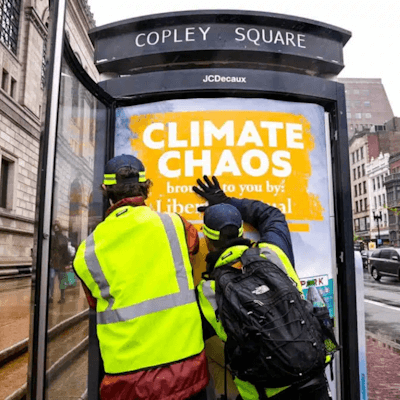
As many as 65 big banks pledged $869 billion in financing fossil fuel
According to a new report, the world’s 65 biggest banks committed a total of $869 billion in financing fossil fuel, $429 billion in fossil fuel production and infrastructure expansion finance in 2024 — the hottest year on record. The data was put together by a coalition of groups co-ordinated by the Rainforest Action Network based on lending and underwriting data from over 2,800 companies. Of the 65 banks covered in the report, 45 ramped up coal, oil and gas finance by $162 billion and 48 increased fossil fuel expansion finance by $84.4 billion in the year. Since the Paris Agreement came into effect in 2016, these banks collectively committed $6.7 trillion in fossil fuel financing. All banks insisted their decision would not impact their decarbonisation pledges.
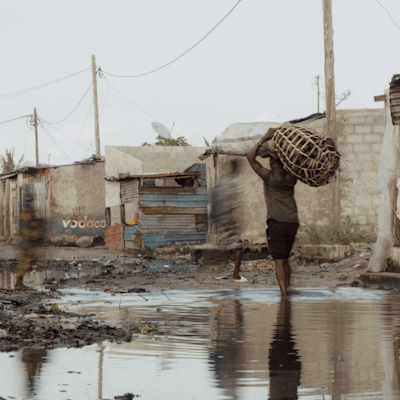
Climate index lists vulnerable countries with little access to funds
The Climate Finance Vulnerability Index, which includes 188 countries, finds that most vulnerable countries are in Africa, where 2 billion people live in “red-zone” countries with high climate disaster risk and minimal access to finance, reports Bloomberg. “Countries that need financing for adaptation the most are not necessarily the ones getting it,” said Gautam Jain, senior research scholar at Columbia University’s Center on Global Energy Policy and the index’s co-creator. Countries like India, which are very vulnerable to climate hazards like flooding and high levels of heat, may be relatively resilient because they are better able to cope with such disasters based on the strength of their infrastructure and ability to respond. The index, developed by Columbia University and funded by the Rockefeller Foundation, is timely because of the significant shortfall in funding for adaptation, which is expected to be a focal point for discussions at November’s COP30 conference in Brazil.
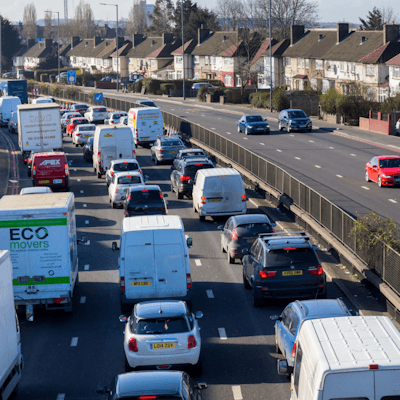
Around 110 million people across Europe affected by noise pollution
A report, from the European Environment Agency (EEA), found 92 million people across Europe were harmed by road transport noise, 18 million by railway noise and 2.6 million by aircraft noise, stated The Guardian. Published research on the health impact of noise pollution was used to estimate an annual toll of 66,000 premature deaths, 50,000 cases of cardiovascular diseases and 22,000 cases of type 2 diabetes. Seventeen million people endure particularly high noise pollution – “long-term, high-annoyance” – and almost 5 million suffer “severe” sleep disturbance. Fifteen million children live in areas of harmful noise. The harm to health from noise is greater than that from higher-profile risks including second-hand tobacco smoke or lead exposure, and incurs an economic cost of almost €100bn (£86bn) a year, the analysis found.

AI problem-solving has heavy environment costs
“AI expends a lot of energy being polite, especially if the user is polite,” Maximilian Dauner, a doctoral student at Hochschule München University of Applied Sciences and first author of the Frontiers in Communication study, told CNN, “This just makes their responses even longer, expending more energy to generate each word.” Dauner suggests users be more straightforward when communicating with AI (artificial intelligence) models. A growing body of research shows that for every problem AI solves, hidden environmental costs are racking up. Each word in an AI prompt is broken down into clusters of numbers called “token IDs” and sent to massive data centers powered by coal or natural gas plants. The whole process can take up to 10 times more energy to complete than a regular Google search.
June 13, 2025

Mumbai’s Aarey tribals allege destruction of trees on farmland
Locals from the Aarey Forest area in Mumbai’s Goregaon East claimed that thousands of trees on their farming land were buried under heaps of soil on June 6, reports Times Now. The Adivasi farmers and environmental groups said that the fields in the Film City belong to 42 indigenous farming families and alleged that private bouncers and unidentified individuals assaulted tribal farmers when they resisted the land-clearing activity. Local farmers also report that soil and stones were dumped into a nearby river, blocking its natural flow. The affected farmers claim that the trees cut or buried were planted and maintained by the community over several years, both for agricultural and environmental purposes. The land has been historically used for generations by tribal families but has been earmarked for various construction projects leading to forceful acquisition.
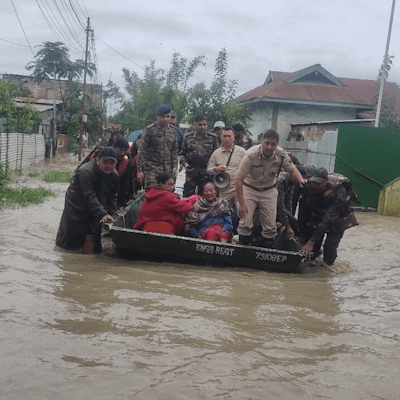
Lakhs affected as Northeast cities break rainfall record
Extreme rainfall across Northeast India has killed at least 46 people and caused severe flooding and landslides, reports Mongabay. The unusually high intensity of rainfall has affected hundreds and displaced many. Mizoram has seen more than 600 landslides since May 24, killing five people. Lalawmpuia Sailo, Secretary of NGO Conservation Mizoram, said the illegal and senseless dumping of debris into streams, rivers and their catchment area is leading to flash floods, mudslides, and turbidity of river water. The widening of National Highways and imprudent actions by the road construction workers leads to rockfall and landslides during the rainy season, he said. Rahul Mahanta, Associate Professor at Cotton University, Guwahati, who specialises in climate science, said sea surface temperatures in the Indian Ocean and Bay of Bengal have been abnormally high: “The depression over Bangladesh and Meghalaya was the trigger that turned the instability into rainfall”.

Major US climate website fires all staff, likely to shut
One of the most popular sources of information about climate science on the internet, climate.gov, which supports public education on climate science, will soon no longer publish new content, reports The Guardian. It is also the gateway website for the National Oceanic and Atmospheric Administration (NOAA)’s Climate Program Office. The content was created and maintained by a contracted staff of about 10, with additional contributions from scientists, and its editorial content was specifically designed to be politically neutral and faithful to the current state of the sciences. All of those staff have now been dismissed. The climate.gov site was housed within the communication, education, and engagement division of NOAA. The fired staff believe the changes to climate.gov were targeted by political appointees within the Trump administration and aimed at restricting public-facing climate information.
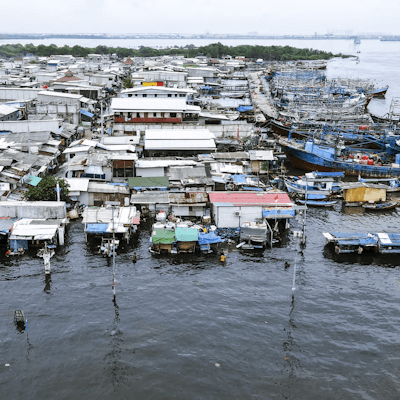
Climate change causing subsidence in 48 coastal cities: Study
A study by Nanyang Technological University (NTU) in Singapore found that dozens of coastal regions across the world are sinking at a worrying speed, report the BBC. The team studied subsidence in and around 48 coastal cities in Asia, Africa, Europe and the Americas. These are places that are particularly vulnerable to a combination of rising sea levels, mainly driven by climate change and sinking land. The most extreme cases of subsidence were seen in Tianjin in north-east China which has undergone rapid industrial and infrastructural development this century. The worst-hit parts of the city sank up to 18.7cm per year between 2014 and 2020. Many factors can contribute to subsidence, including building, mining, tectonic shifts, earthquakes, and natural soil consolidation. “One of the most common causes is groundwater extraction,” explains the lead researcher on the NTU study, Cheryl Tay. It has had a major impact in half of the 48 coastal cities identified in the study.
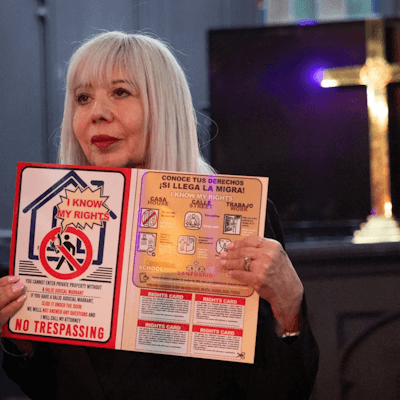
Chicago campaigns to fight for immigrants’ rights
As US President Donald Trump continues to roll out unprecedented attacks on immigrants, notably increased detentions and deportations without due process, organisers in Chicago are scrambling to expand traditional tools used in the fight for immigrant rights to accommodate ballooning needs, reports The Guardian. On June 3, ICE officers arrested more than 2,200 people, a record high. The Know Your Rights campaign is a coordinated effort on the part of city officials and local immigration advocacy groups to alert individuals of their rights during interactions with Immigration and Customs Enforcement (Ice). This is evidence of Chicago’s activism, long history of protecting its immigrant communities and resistance to attempts by previous administrations to weaken their protections. Chicago organisers have implemented a swathe of strategies to resist ICE, responses rooted in collaboration between organisations that have been in place dating back to the first Trump administration.

Increasing sea acidity threatens marine ecosystems: Study
A new study by the UK’s Plymouth Marine Laboratory (PML), the Washington-based National Oceanic and Atmospheric Administration and Oregon State University’s Cooperative Institute for Marine Resources Studies found that ocean acidification’s “boundary” was also reached about five years ago, reports The Guardian. Ocean acidification, often called the “evil twin” of the climate crisis, is caused when carbon dioxide is rapidly absorbed by the ocean, where it reacts with water molecules leading to a fall in the pH level of the seawater. It damages coral reefs and other ocean habitats and, in extreme cases, can dissolve the shells of marine creatures. Until now, ocean acidification had not been deemed to have crossed its “planetary boundary”. “This had huge implications for important underwater ecosystems such as tropical and even deep-sea coral reefs that provided essential habitats and nursery grounds for the young of many species,” said PML’s Prof Helen Findlay.
May 30, 2025
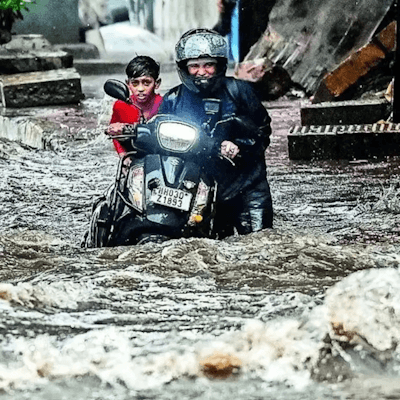
Mumbai sees wettest May in a century, monsoon arrives record early
Mumbai has recorded its earliest ever monsoon onset since 1950, reports The Times of India. Monsoon rains hit the city on May 27, over two weeks ahead of the usual June 11 date. This coincided with the city breaking a 100-year rainfall record for May. Colaba recorded 439 millimetres surpassing the 1918 record of 279.4 millimetres, while Santacruz logged 272 millimetres. According to IMD, Nariman Point received 104 mm in just one hour, classified as an “intense rain spell”. Trains and flights were delayed or diverted, metro stations flooded, and newly developed areas severely waterlogged. South Mumbai, including Mantralaya and the new Acharya Atre Chowk station near Worli, saw knee-deep water. Infrastructure failures included road cracks, building damage, and tree falls. Other cities such as Bengaluru, Pune and Delhi also witnessed record-breaking rainfall disrupting normal life.
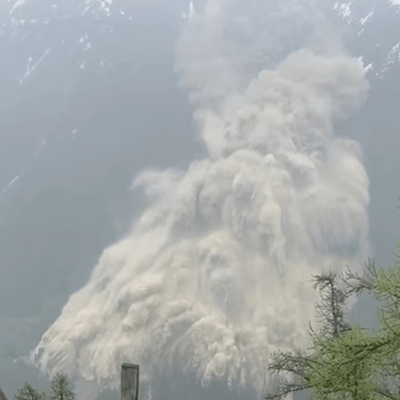
Glacier collapse in the Alps buries Swiss village
A deluge of ice, mud and rock buried most of a mountain village after a huge chunk of a glacier in the Swiss Alps broke off on May 28, reported Reuters. Buildings and infrastructure in Blatten, whose roughly 300 inhabitants were evacuated on May 19 after geologists identified the risk of an imminent avalanche of rock and ice from above, were battered by the rockslide. Swiss President Karin Keller-Sutter expressed her solidarity with the local population as emergency services warned people and urged them to stay away. Experts said it was difficult to assess the extent to which rising temperatures spurred by climate change had triggered the collapse. Christian Huggel, a professor of environment and climate at the University of Zurich, said while various factors were at play in Blatten, it was known that local permafrost had been affected by warmer temperatures in the Alps.
‘Earth tracking towards 2.7°C despite progress’
The Earth is now projected to warm by around 2.7 degrees Celsius by the end of the century, according to an analysis reported in The Conversation. While this is an improvement from earlier worst-case scenarios of 4 degrees Celsius or more, scientists caution that the outlook remains alarming. Current national climate pledges, if fully implemented, could limit warming to roughly 2 degrees Celsius. However, most countries are not yet on track to meet those promises. This level of warming would still lead to more extreme weather, rising sea levels, and ecosystem collapse. Without stronger and faster cuts to greenhouse gas emissions, the world risks dangerous changes. Although some progress has been made through renewable energy and climate agreements, more ambition and action are urgently needed. The article calls for political will, international cooperation, and a renewed push to meet the Paris Agreement’s safer 1.5 degrees Celsius target. Time, they warn, is running out.

Labour MPs demand ‘Right to Roam' in England after court ruling
Labour MPs in the UK are urging the government to introduce a comprehensive ‘right to roam’ law in England, following a recent Supreme Court ruling that denied public access to Dartmoor’s privately owned wild camping areas. As reported by The Guardian, the ruling upheld landowner rights but a compromise deal temporarily restored some access. Critics argue it fails to guarantee lasting public freedom. Labour’s Clive Lewis and Olivia Blake are among those calling for legislative change that would extend roaming rights beyond footpaths into nature-rich areas such as woodlands, riversides, and green belts. The debate taps into a broader conversation on public access, health, and equity — especially as Scotland and parts of Europe already enjoy broader land access rights. Campaigners and MPs see this as a key environmental and social justice issue.

UK faces threat of insect-borne diseases due to climate change
Scientists are warning that climate change could bring insect-borne tropical diseases such as dengue, Zika, and West Nile virus to the UK. As The Guardian reports, rising temperatures are making conditions favourable for disease-carrying mosquitoes like the Asian tiger mosquito and Culex species. The West Nile virus was detected in the UK mosquitoes this year. Experts caution that while large outbreaks remain unlikely for now but continued warming could make them probable. Academics also point to the UK’s cuts to foreign aid as a risk, arguing that weakened global disease control could have domestic consequences. They stress the importance of both climate action and international cooperation in disease surveillance and health infrastructure. Researchers say stronger, sustained investment is needed to prevent tropical diseases from gaining a foothold in Britain.

Chicago’s latest museum builds narrative around public housing
The National Public Housing Museum in Chicago is billed as the first to focus entirely on the history of American public housing, which provided homes for more than 10 million people across US cities over the last 100 years, reports Bloomberg. It was the home of the largest federally supported public housing complex, Robert Taylor Homes, as well as the one whose poor condition and reputation for crime made it synonymous with the failures of 20th century public housing, Cabrini-Green. The museum’s roots lie in an infamous act of mass housing destruction. In 2000, the Chicago Housing Authority committed to the Plan for Transformation, an initiative to tear down some 20,000 units of public housing stock, mostly located in poorly managed and maintained high-rise complexes. It remains the “largest net-loss of affordable housing in the United States,” says executive director Lisa Yun Lee.

US reimagines porch as symbol of generosity at Venice biennale
At the 2025 Venice Architecture Biennale, the US pavilion foregrounds the porch—a seemingly modest architectural form as a site of cultural depth, public exchange, and spatial generosity, reports Bloomberg. Titled ‘Porch! An Architecture of Generosity’, the exhibit explores the American porch as a climate-responsive, community-oriented, and hybrid public-private space. Co-curated by Peter MacKeith, Susan Chin, and Rod Bigelow, the show features a 2,300 sq ft mass-timber porch built at the Biennale’s main square, drawing crowds and conversations. The exhibit extols the porch as a graceful climate adaptation, an amenity that fosters neighbourliness, and a space that balances private and public uses while inviting people to shelter and mingle. In many places the porch compensates for the absence of other dedicated public spaces.

Scientists alarmed by early marine heatwave in UK coast
A significant marine heatwave has struck the seas off Devon, Cornwall, and Ireland’s west coast, with sea surface temperatures currently 2 to 4 degrees Celsius above normal, reports The Guardian. The heatwave began unusually early in March and has lasted over two months, raising alarm among marine scientists. Spring temperatures, typically around 11 to 12 degrees Celsius, have surged to 15-16 degrees Celsius. Experts warn that such sustained warming, driven by human-induced climate change, could severely disrupt marine ecosystems. There is growing concern over impacts on plankton cycles, fish stocks, and the broader food chain. The UK Met Office links the anomaly to a combination of climate change and local weather patterns. If these trends continue, marine biodiversity could be at risk. The warning is clear: ocean health is under mounting threat.
May 16, 2025
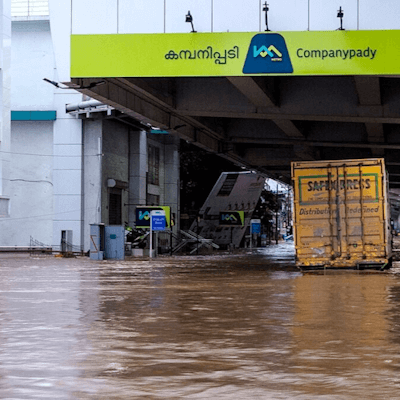
Climate finance gaps push Kerala to back local innovation
With limited access to multilateral climate finance and restrictive central policies, Kerala is increasingly relying on startups, local governments, and grassroots innovation to drive climate action, reports Mongabay. The state estimates it will need over Rs 900 billion by 2030 for climate mitigation and adaptation, yet accessing global climate funds has proved difficult. In response, the Kerala State Climate Change Adaptation Mission (KSCCAM), launched in 2023, is working to attract alternative finance streams. Kerala has set a target of 100 percent renewable energy by 2040 and is integrating climate goals into local planning frameworks. District-level climate vulnerabilities have been mapped, and local bodies are raising small-scale funds for climate projects. Officials say that empowering local governance and embracing decentralised innovation could enable climate resilience, even in the face of limited external support.

Extreme climate events a threat to bananas: Report
Rising temperatures, shifting monsoon patterns and climate-driven pests are endangering banana-producing regions across the world — prompting urgent calls for emission cuts and greater support for farmers, reports The Tribune. Titled ‘Going Bananas: How Climate Change Threatens the World’s Favourite Fruit’, the report by international development charity Christian Aid includes first-hand accounts from banana growers working with the agency’s partner organisations. Climate change is posing both immediate and long-term threats to India’s banana production. In Central India, including the exporting state Maharashtra, extreme rainfall events have tripled since 1950, even as total annual rainfall has declined. One study warns that banana yield could fall significantly by 2050 without adaptation, threatening livelihoods in a country where 43 percent of the population depends on agriculture and 14 percent is already undernourished.

Pope Leo XIV calls for urgent climate action, echoes Francis’ legacy
The newly elected Pope Leo XIV, formerly Cardinal Robert Prevost, has made climate change a central issue in his early remarks as pontiff, echoing and expanding the environmental commitment of his predecessor, reports Fast Company. Drawing attention to the worsening climate crisis, Pope Leo XIV urged the global community to transition “from words to action,” highlighting the moral and spiritual dimensions of environmental responsibility. Having previously supported initiatives like installing solar panels at the Vatican and switching to electric vehicles, the Pope believes in adopting technologies that align with ethical and ecological values and critiques unbridled technological growth and extractive ideologies urging a respectful relationship with nature. When Pope Francis spoke in November 2024 about climate change impacting the world’s most vulnerable populations calling for global cooperation, Cardinal Prevost had stressed it was time to move “from words to action,” Vatican News reported at the time.
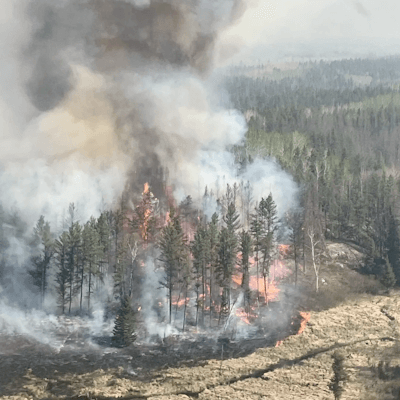
Canada’s deadly wildfire kills 2, forces evacuation of 1,000 residents
The deaths of the man and woman in the province of Manitoba marked a grim start to Canada’s wildfire season, reports The New York Times. Around 1,000 people were evacuated from Lac du Bonnet and surrounding areas as the fire spread to about 10,000 acres. Parts of Manitoba have experienced an intense heat wave this season, with temperatures in Winnipeg rising to 37 degrees Celsius — about 99 degrees Fahrenheit — on May 13 breaking a 125-year record. Fires caused by lightning strikes are expected to increase across southern British Columbia and Canada’s prairie region in the late spring, fuelled by warm and windy conditions, according to a report. Fires in Quebec sent massive amounts of smoke into the United States, turning the skies an apocalyptic orange hue, setting off an acrid smell, and sending people to the hospital with breathing issues.
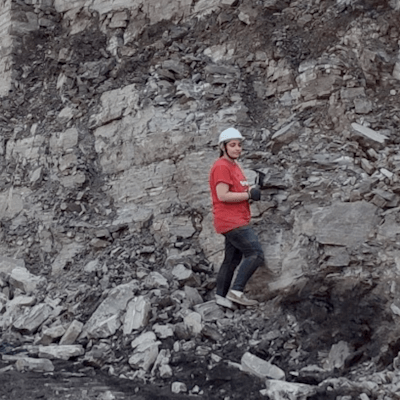
Fossil leaves reveal climate disruption's long ecological shadow
A new study reported by Mongabay draws on fossilised leaves from the Deccan Traps to understand how ecosystems responded to ancient climate shifts. The research shows how massive volcanic activity 66 million years ago triggered a greenhouse event, altering plant diversity and structure, with patterns echoing today’s warming trends. By comparing ancient leaf traits with modern equivalents, scientists observed significant shifts in plant ecology and resilience. The study emphasises that long-term ecological disruption is already underway and may intensify without rapid emissions cuts. The experts argue that only the protection of remaining evergreen forests — products of millions of years of evolution — can safeguard these ancient ecosystems. They warn that afforestation efforts cannot replicate the complex, time-tested biodiversity of natural forests, and losing them would erase a legacy that has endured ice ages, tectonic shifts, and past climate upheavals. The way forward is to focus on conserving regions like the Western Ghats.

UK must heed drought warnings and be prepared
Alarms are being sounded by environmentalists and farmers after a very dry spring followed a winter during which parts of the country, including Northern Ireland, had only 70 percent of average rainfall, states The Guardian editorial. Some crops are already failing, and worse will follow unless more rain arrives soon. Conditions now are said to resemble 2022 – the last time that farms suffered significant losses due to drought. The Environment Agency is advising people to start limiting their water use. The Climate Change Committee warns that extreme weather events like droughts and floods are becoming more frequent. They highlighted the lack of national preparedness for these extreme weather conditions, underscoring inadequate infrastructure and climate adaptation measures by water companies. Farmers are exploring alternative crops in response to changing weather patterns, such as vineyards and chickpeas.
May 2, 2025
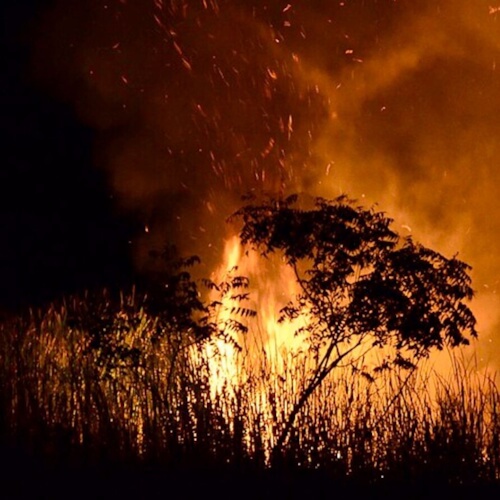
Increasing wildfires in north and central India threaten biodiversity
Since April, satellite data from the Forest Survey of India (FSI) has recorded thousands of forest fire incidents, with Madhya Pradesh reporting the highest number — 2,754 incidents between April 11 and 18, reports Mongabay. Maharashtra followed with 1,766 fires, Chhattisgarh with 876, and Odisha with 603. These figures mark a continuation of a broader trend. Fires have also been reported in Jammu and Kashmir, Himachal Pradesh, and Uttarakhand. The fires are degrading forests, threatening biodiversity, and accelerating desertification, FSI scientists note. The winter of 2024–25 was among the driest in recent memory for large parts of India, particularly in the Himalayan region. Experts warn that shifting climate patterns combined with human activity are driving longer, more intense wildfire seasons, with growing ecological and climatic fallout.

Massive power outage in Spain, Portugal upends modern life
About 55 million people were plunged into a pre-electric age on April 28, as Spain, Portugal and parts of southern France suffered the worst power outages in recent European history, reported The Guardian. Mobile signals were disrupted, traffic lights stopped working, supermarkets went dark and resorted to cash as digital payment systems stalled, and people were stranded far from their homes as the blackout stretched on for much of the day. Hospitals were forced to cancel surgeries due to out-of-order lifts and the inability to move patients around safely, said Iñigo, a doctor at a hospital in northern Spain. “It made me realise we are so dependent on electronics.” The outages also led to people getting trapped in underground metro tunnels and on trains, with many people forced to walk along the tracks or stay in place for hours. Yet, people were spending time outdoors and enjoying themselves.
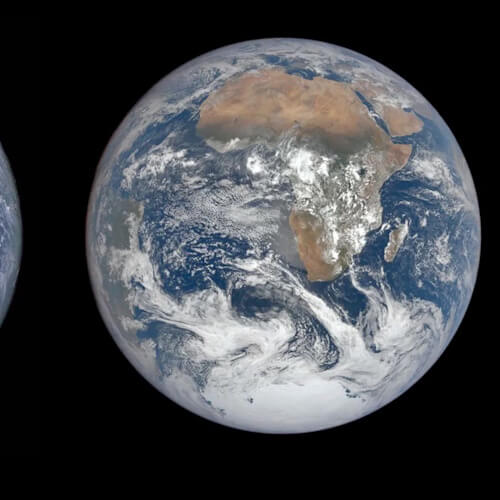
New images reveal visible changes to the Earth's surface
The BBC reports how 50 years of climate change has changed the face of the earth from space. The first images of the Blue Marble were taken by the crew, who passed between them the onboard camera – a hand-held analogue Hasselblad 500 EL loaded with 70mm Kodak film – captivated by the sight of the Earth from space. “All the images captured with Hasselblads are spectacularly clear and bright,” says Jennifer Levasseur, curator at the Smithsonian National Air and Space Museum in Washington DC. Ours is a planet of great change. The tectonic movements that shift the land masses move too slow for our eyes to notice. Yet another force – humanity itself – has been reshaping our planet at a pace that we can see. Urbanisation, deforestation, pollution and greenhouse gas emissions are altering the way the Earth looks.
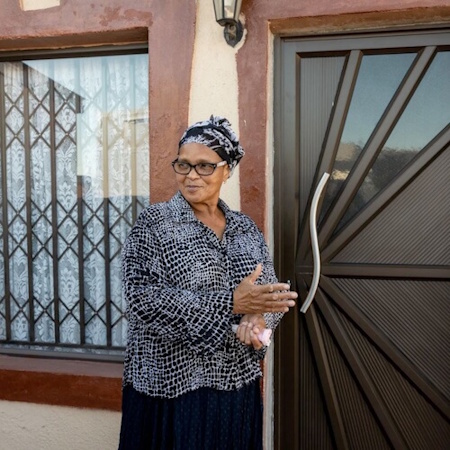
European cities rank high on sustainability, liveability
The BBC reports how 50 years of climate change has changed the face of the earth from space. The first images of the Blue Marble were taken by the crew, who passed between them the onboard camera – a hand-held analogue Hasselblad 500 EL loaded with 70mm Kodak film – captivated by the sight of the Earth from space. “All the images captured with Hasselblads are spectacularly clear and bright,” says Jennifer Levasseur, curator at the Smithsonian National Air and Space Museum in Washington DC. Ours is a planet of great change. The tectonic movements that shift the land masses move too slow for our eyes to notice. Yet another force – humanity itself – has been reshaping our planet at a pace that we can see. Urbanisation, deforestation, pollution and greenhouse gas emissions are altering the way the Earth looks.

Six in ten companies slide back on funding Pride groups in the US
In a new survey of dozens of corporate executives across various sectors — from federal contractors to health care companies to consumer brands — roughly 2 in 5 said they were scaling back Pride Month engagement in 2025 compared to previous years, reports Bloomberg. That includes both internal engagement like promoting workplace equity and public-facing participation like sponsoring or appearing in Pride events. Six in ten companies cite pressure from the Trump administration — which has pushed policies targeting transgender and nonbinary people while also cracking down on diversity, equity and inclusion, or DEI — as a key reason. Nearly 40 percent of all companies point to the threat of backlash from conservative activists and consumers, including more than three-quarters of consumer brands. San Francisco Pride, which will hold its festival in late June, is down roughly $200,000 after sponsors dropped their sponsorship.

Polluted Florida waters cause manatees to starve
Dozens of dead manatees washed up in Brevard County, Florida, as their main food source vanished after decades of pollution flooded the Indian River Lagoon — and the species’ most important home on the East Coast turned into a graveyard, reports Tampa Bay Times. To trace the manatee die-off to its roots, Times reporters conducted a first-of-its-kind statewide analysis, pinpointing alarming levels of chemicals in nearly one in four waterways. Florida’s biggest sources of water pollution — agriculture and development — aren’t held to strict limits on the nitrogen and phosphorus that flow off sprawling farms and city streets. Chemicals spew from fertilizer and waste too. More than 89,000 acres of seagrass disappeared statewide over roughly a decade, including from waters beset by recent blooms such as Tampa Bay and Charlotte Harbor. In the Lagoon, nearly all the seagrass manatees could have eaten died.
April 18, 2025
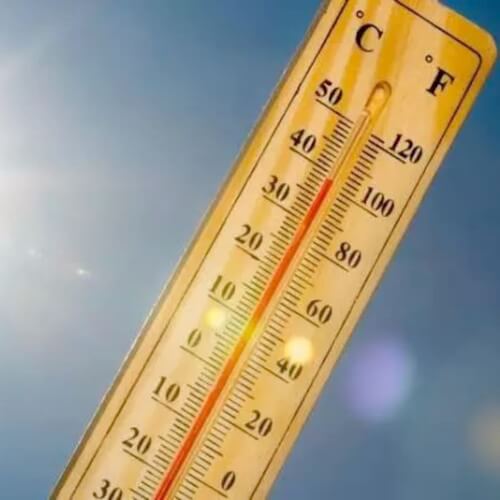
Telangana declares sunstroke as ‘state specific disaster’
Telangana declares heatwave/sunstroke as a ‘state-specific disaster’ and will pay Rs 4 lakh compensation to victims of heat stroke, reports News Meter. Telangana witnessed month-long heat waves in some districts. People, especially the construction workers and daily wage earners in Hyderabad, Warangal, Hyderabad Urban Agglomeration and all urban local bodies are vulnerable to heat waves and sunstroke. The state had been providing assistance of Rs 50,000 to the families of those who died because of sunstroke. All districts in Telangana have prepared a district-specific heat wave action plan but, in the absence of a notification declaring the heat wave as disaster, the ex-gratia was not provided. Heat waves remain a ‘hidden hazard’ whose impact is not visible.
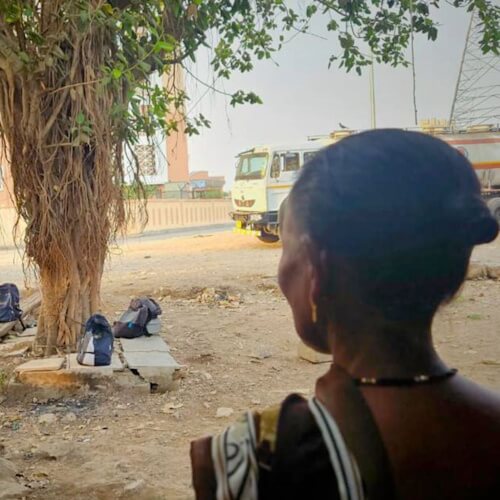
Five govt hospitals in Mumbai to go to private players
The Brihanmumbai Municipal Corporation announced plans to give away five of its major hospitals in Mankhurd, Borivali, Bandra, Vikhroli, Govandi and Mulund to private players under the public-private partnership model, reports Scroll.in. Each of these hospitals currently serves a significant slum population who stand to lose out. A health department official said the civic body is fund-strapped and short-staffed, making it difficult to handle the 17 hospitals under it. The municipal corporation’s former executive health officer Dr Mangala Gomare said the PPP model is a good option but the challenge is to monitor the private partner and whether they are following all the terms of the contract.

Greenest city Oslo still struggles with air pollution
Norway’s capital Oslo has a reputation for proactive anti-pollution policies and its air would be far dirtier without these measures, but they haven’t been enough to render it fully clean, reports Bloomberg. If Oslo’s experience shows anything, it’s that cutting carbon emissions may be valuable but it will not automatically reduce other types of pollution. “An electric car doesn’t produce any nitrogen oxide pollution but that doesn’t mean that an electric car is not producing particles,” said Tobias Wolf, the city’s chief engineer of air quality. Fine particulate matter, PM 10 and PM 2.5, are persistent problems. Among the most unique contributors to the city’s dirty air are Oslo’s many tunnels, made necessary partly by hilly topography and waterside setting.
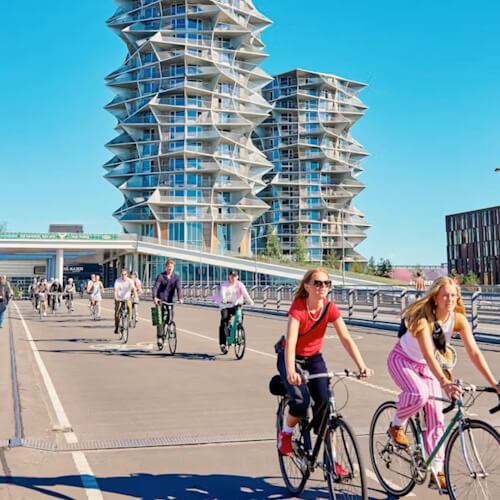
European cities rank high on sustainability, liveability
The IESE Cities in Motion index has listed London, New York and Paris as the world’s most dynamic and liveable cities, reports The Conversation. They have done well in human capital, which includes features like educational and cultural institutions. They also score high on international profiles which look at indicators of global interest such as the number of airport passengers and hotels. Five of the top 10 cities – London, Paris, Berlin, Copenhagen and Oslo – are European. There’s no single reason behind Europe’s success, but there are patterns such as advanced technology, international communities, and diversified economies. The IESE Cities in Motion looks at 183 cities in 92 countries, and ranks them in nine key areas: human capital, social cohesion, economy, governance, environment, mobility and transportation, urban planning, international profile and technology.
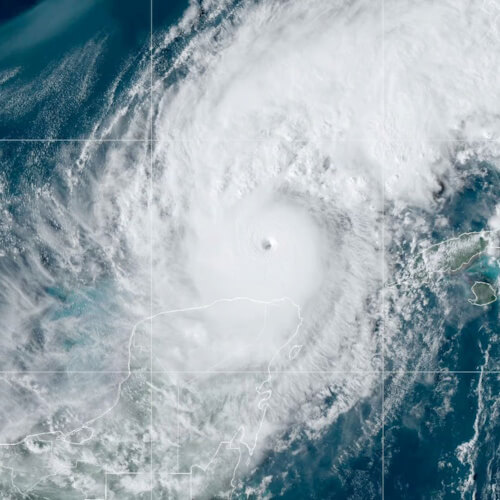
‘We need to make choices necessary to safeguard the planet’
The climate crisis is worsening before our eyes and we cannot afford to remain silent on the necessity of responsible research into nature-based climate repair, writes professor and scientist Sir David King, in The Guardian. “We must act with this long-term perspective in mind. Scientists agree we need to bring greenhouse gas levels down to below 350 parts per million by the end of this century to ensure a liveable planet for future generations. Achieving this will require a four-pronged approach: reduce, remove, repair and resilience. We must explore these approaches as part of a holistic climate response, not in place of deep emissions reductions, but as a complement to them. We must advance research into climate repair urgently…To do so, we must use our voices, collectively and courageously, before the choices are no longer ours to make,” he writes.

How São Paulo’s temporary theatre became a safe public space
An excerpt from Adaptable Cities and Temporary Urbanisms by Lauren Andres published in Next City highlights a São Paulo community theatre that shows how citizens are left to pick up the slack when cities fail to meet their residents’ needs. Teatro de Contêiner Mungunzá was developed in 2016 on a public plot of land originally used as a police car park. In one night, the company installed 11 containers and built the theatre structure. Everything on the site is temporary and adaptable, including the building made from recycled shipping containers, the community playground, the gardening and food-growing structures and sitting areas. Although enclosed, the grounds are kept open for locals who can use it to socialise, rest, or access the bathroom for non drug use. For residents, particularly children and mothers, the theatre has become a safe place where they can play and socialise without fear of violence.
April 4, 2025

Myanmar earthquake leaves Mandalay residents hungry, homeless
Four days after a 7.7 magnitude earthquake struck Myanmar, many residents in Mandalay have been living out of tents – or nothing – along the streets, fearing that what is left of their homes will not hold up against the aftershocks, reports the BBC. The death toll from the quake and a series of aftershocks has climbed past 2,700 with 4,521 injured and hundreds still missing, Myanmar’s military chief said. Poor infrastructure and a patchwork of civil conflicts are severely hampering the relief effort in Myanmar, where the military has a history of suppressing the scale of national disasters. The death toll is expected to rise as rescuers gain access to more collapsed buildings and cut-off districts. Military chief Min Aung Hlaing said the death toll may exceed 3,000, but the US Geological Survey said “a death toll over 10,000 is a strong possibility”.

Cutting a large number of trees worse than killing a human: SC
On March 26, the Supreme Court ruled that cutting a large number of trees is worse than killing a human being, reports The Times of India. It imposed a fine of Rs 1 lakh per tree for illegal felling and refused to reduce the fine for the man who illegally cut down 454 protected trees. “No mercy in the environmental case. Felling a large number of trees is worse than killing a human. It will take at least 100 years to again regenerate or recreate the green cover created by 454 trees which were blatantly cut without permission of this court though the embargo imposed by this court is right from the year 2015,” the bench said. In its report, the central empowered committee (CEC) said 454 trees were illegally felled on the night of September 18 last year, without permission from the authority concerned.
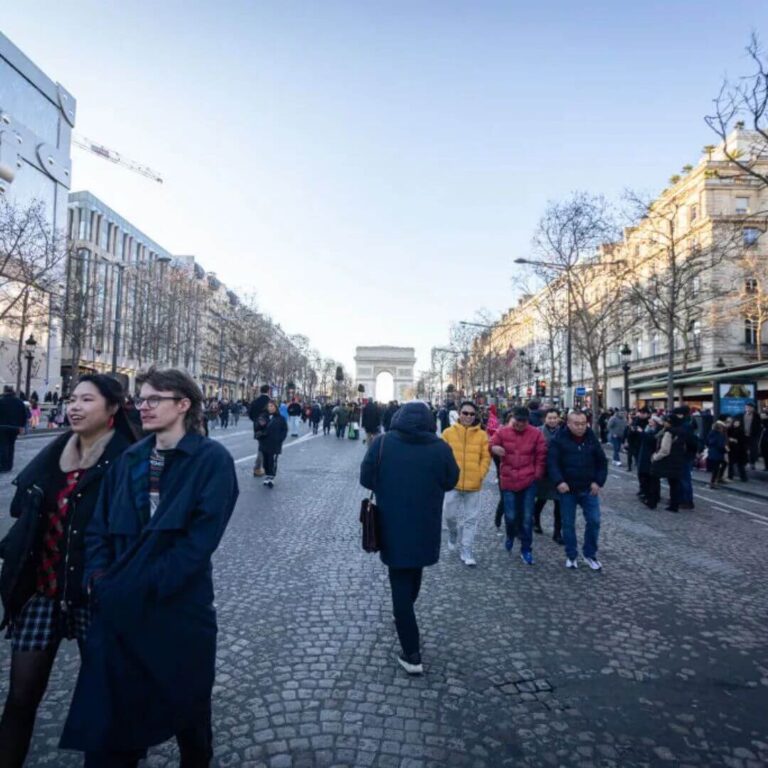
Make 500 more streets car-free, say Paris residents
Parisians want “more pedestrian streets, fewer cars, more nature in the city,” reports Bloomberg. Paris voters opted in a referendum on March 30 to close 500 more city streets to cars, making way for pedestrians, bikers, and greenery. The plan, which will also remove 10 percent of Paris’ current parking spots, will expand on a green push by Mayor Anne Hidalgo that has already seen 300 streets planted and cleared of cars since 2020. Coming a year before the end of Hidalgo’s second and final term, the initiative will continue to change the face and character of a city that has already taken major steps away from car dominance towards an emphasis on public transit and active travel. The aim is to pedestrianise five to eight streets per neighbourhood, with locals being consulted this spring to determine which streets would be most suitable, and an average budget of €500,000 ($540,000 USD) per street.
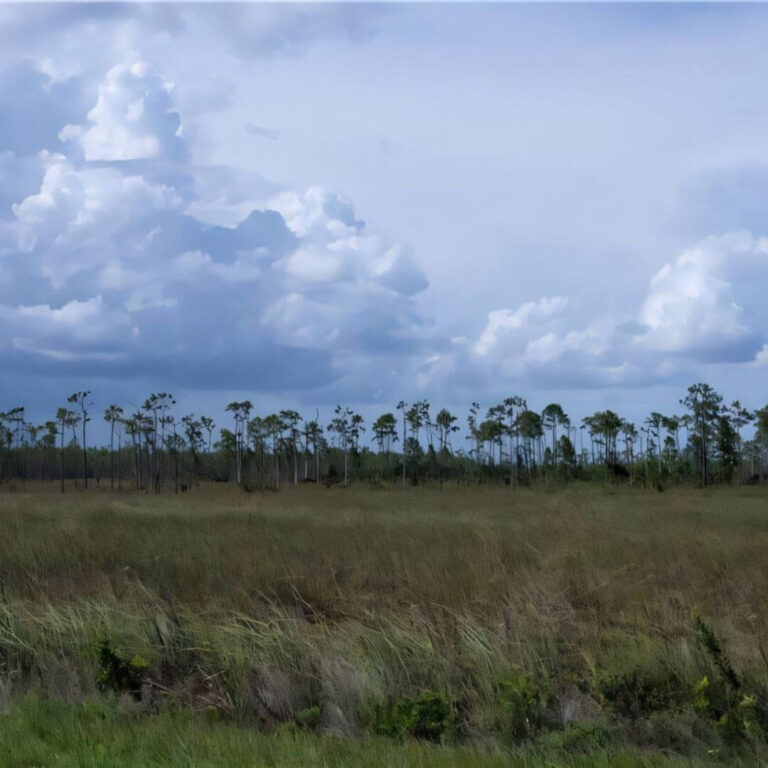
Tropical wetlands are significant source of methane: Ongoing study
NASA’s BlueFlux Campaign is examining coastal wetlands, vital carbon sinks, to understand their role in carbon capture and greenhouse gas emissions, reports NASA. Researchers are measuring carbon dioxide absorption and methane release, crucial for climate change modeling. Scientists Ben Poulter and David Lagomasino use core samples and gas exchange measurements to analyse historical carbon storage and real-time atmospheric interactions. Florida’s wetlands, roughly 5,000 years old, alone remove an estimated 31.8 million metric tonnes of carbon dioxide annually, highlighting their significance. The research will help scientists develop models to estimate and monitor greenhouse gas concentrations in coastal areas around the globe.

Guatemalan city strengthens bond with nature for sustainable living
The conservation story of Totonicapán – a city in Guatemala home to half a million people – begins with its people’s relationship with the land, reports Earth.Org. EcoLogic’s agroforestry systems, which integrate trees into agricultural practices, reflect this connection. The governance of the 48 Cantons, led by the Junta Directiva de Bienes y Recursos Naturales, has historically protected the forest. But, increasing pressures have required collaboration to blend tradition with innovation, ensuring environmental and economic resilience. Ecotourism has emerged as another innovative solution. The success of these initiatives lies in their interconnectedness. Agroforestry reduces dependence on forests, Pinabete plantations address species-specific challenges, fuel-efficient stoves reduce deforestation, and ecotourism showcases the value of preservation. Together, these efforts form a cohesive strategy that addresses both the environmental and economic needs of Totonicapán.

Demand met, UK climate action group to call it quits
The UK-based environmental activist group, Just Stop Oil (JSO), will disband because it says it has won because its demand that there should be no new oil and gas licences is now government policy, reports the BBC. It has said its last protest at the end of April will mark “the end of soup on Van Goghs, cornstarch on Stonehenge and slow marching in the streets”. Just Stop Oil was born out of the Extinction Rebellion (XR). XR – founded in 2018 – brought thousands of people onto the streets in what were dubbed “festivals of resistance”. The group was formally launched on Valentine’s Day, 2022. Since then, dozens of the group’s supporters have been jailed. Five activists were handed multi-year sentences for their role in the M25 actions in 2022 – the longest jail terms for non-violent civil disobedience ever issued.
March 21, 2025

Heat watch: Odisha, Maharashtra record high temperatures
On March 16, four places in Odisha were among the top five hottest places in the country with Boudh recording the highest temperature at 43.6 degrees Celsius topping the list, reports The Times of India. Boudh was followed by Jharsuguda (42 degrees Celsius), Balangir (41.7 degrees Celsius) and Angul (41.1 degrees Celsius) with Chandrapur (41.6 degrees Celsius) in Maharashtra taking the fourth spot on Sunday. A red warning has been issued for Jharsuguda, Sambalpur, Kalahandi, Sonepur and Boudh, where temperatures are expected to remain significantly high,” said Manorama Mohanty, director of IMD’s Bhubaneswar centre.
On March 14, Chandrapur in Maharashtra recorded 41.4 degrees Celsius, making it one of the hottest places in India. The Vidarbha region in Maharashtra continues to bear the brunt of the heat, with six of its monitoring stations recording temperatures above 40 degrees Celsius.
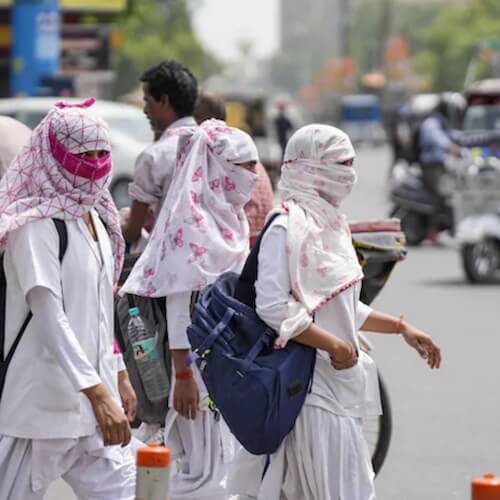
300 heat action plans to be finalised at the city level in India
As India braces for another harsh summer, the National Disaster Management Authority (NDMA) is planning to introduce 300 additional Heat Action Plans (HAPs) at the city level. These plans may include both emergency response activities and long-term heat preparedness and cooling interventions across sectors, reports Business Standard. “Once these HAPs are in place, the big job for all of us starts—how to push them through. Getting district magistrates oriented and bringing heat action plans from policy documents to on-ground implementation are the basic tasks NDMA has taken upon itself,” said Safi Ahsan Rizvi, advisor at NDMA, at the Global Heat and Cooling Forum conference. According to a United Nations report, India recorded 40,000 suspected heat stroke cases and over 100 deaths by mid-June last year, when temperatures soared to nearly 50°C, especially in eastern and northwestern regions.
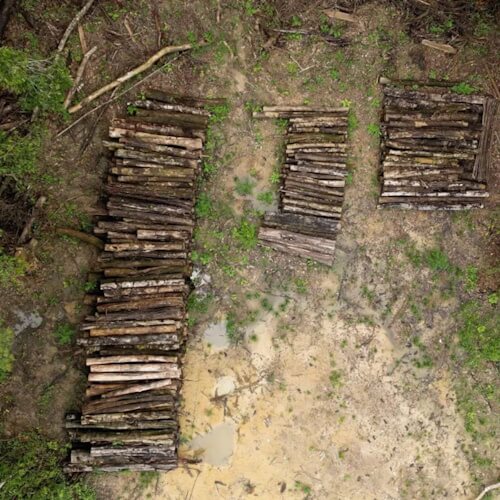
Amazon forest cleared to build road for climate summit
Tens of thousands of acres of protected Amazon rainforest have been cut to build a four-lane highway for the COP30 climate summit to be held later this year in the Brazilian city of Belém, reports the BBC. The Brazilian president and environment minister say this will be a historic summit because it is “a COP in the Amazon, not a COP about the Amazon”. Many say this deforestation contradicts the very purpose of a climate summit. The Amazon plays a vital role in absorbing carbon for the world and providing biodiversity. “We are going to lose an area to release these animals back into the wild, the natural environment of these species,” said Prof Silvia Sardinha, a wildlife vet and researcher at a university animal hospital that overlooks the site of the new highway. “Land animals will no longer be able to cross to the other side too, reducing the areas where they can live and breed.”
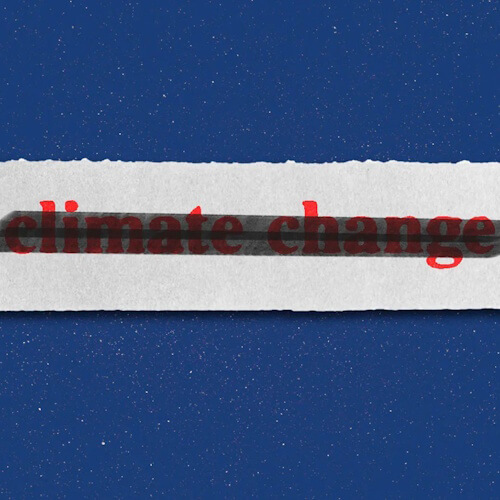
Trump administration crackdown on climate and words continues
The National Science Foundation, which accounts for about a quarter of federal support to universities, has been flagging studies that might violate Trump’s executive orders on gender and diversity initiatives based on a search for words such as ‘female’, ‘institutional’, ‘biases’, ‘marginalised’, and ‘trauma’, reports Grist. The Trump administration’s crackdown on words tied to progressive causes reflects the rise of what’s been called the “woke right,” a reactionary movement with its own language rules in opposition to “woke” terms that have become more prevalent in recent years. Since Trump took office, federal agencies have deleted climate change information from more than 200 government websites, according to the Environmental Data and Governance Initiative, a network that tracks these changes. These shifts in language lay the groundwork for how people understand what’s real and true.
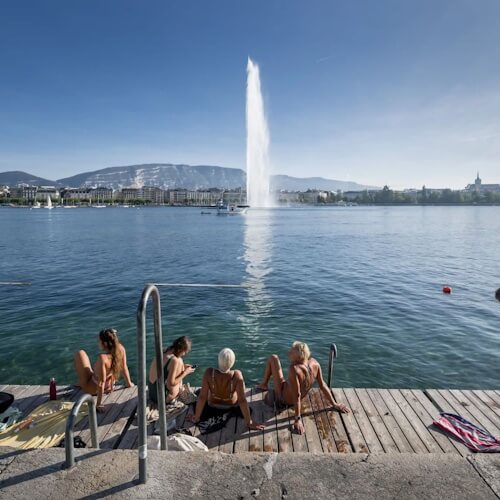
Switzerland transforms dirty rivers into pristine clean water
In the 1960s, Switzerland had among the dirtiest water in Europe, blighted by mats of algae, mountains of foam, scum, and dead fish floating on the surface. For decades, swimming was banned in some rivers such as the Aare and Limmat on health grounds, and people could get ill if they swallowed the water, reports The Guardian. Now Switzerland has some of the cleanest rivers in Europe. According to 2023 data from the European Environment Agency, just five of the country’s 196 bathing areas were rated as poor quality. Politicians across the spectrum agree on the need to prioritise clean water. “Very high water quality is important to the population,” says Michael Mattle, head of wastewater technology at the engineering company Holinger. “We take a lot of care not to pollute water. I think Swiss people are proud of their water,” he says, adding that it helps citizens enjoy a “healthy and joyful life”.

Reject fossil fuel industry immunity efforts: Environmental groups
Nearly 200 advocacy groups have urged Democratic representatives to “proactively and affirmatively” reject potential industry attempts to obtain immunity from litigation, reports The Guardian. “We have reason to believe that the fossil fuel industry and its allies will use the chaos and overreach of the new Trump administration to attempt yet again to … shield themselves from facing consequences for their decades of pollution and deception,” reads a letter to Congress on March 12. It was signed by 195 environmental groups such as the Sierra Club, Earthjustice and Sunrise Movement; legal non-profits including the American Association for Justice and Public Justice; and dozens of other organisations. “Lawmakers must decisively reject any attempt by the fossil fuel industry to evade accountability and ensure both justice today and the right of future generations to hold polluters responsible for decades of deception,” said the missive addressed to the House minority leader, Hakeem Jeffries, and Senate minority leader, Chuck Schumer.
March 7, 2025
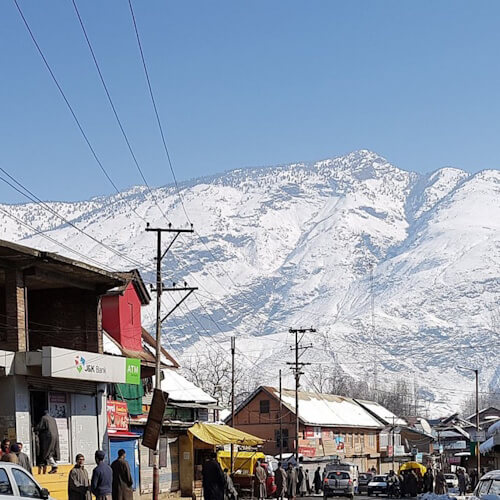
Massive avalanche hits Jammu and Kashmir
Days after an avalanche hit a Border Roads Organisation (BRO) Camp in Mana, Uttarakhand, killing eight workers, a massive avalanche hit Sarbal area of Sonmarg in Kashmir’s Ganderbal district on March 5, reports The Times of India. No loss of life was reported. The Mana avalanche on February 28 trapped 54 workers; 46 were rescued alive and eight were found dead. The Himalayas, particularly the Western Himalayas, are highly prone to avalanches, affecting Jammu and Kashmir, Himachal Pradesh, and western Uttar Pradesh. Avalanches typically occur after fresh snowfall adds a new layer to the existing snowpack and are triggered by natural forces such as gravity on steep slopes, earthquakes, rising temperatures weakening snow layers, wind, terrain, and vegetation. Human activities, including skiing, construction, and controlled explosions for avalanche mitigation, can also set off the snow slides.
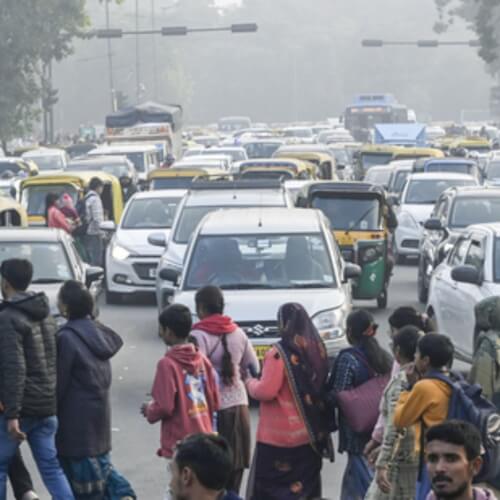
Fuel curbs in Delhi from March 31 to control air pollution
The newly-formed BJP government in Delhi plans stringent steps to curb vehicular emissions and pollution. Vehicles older than 15 years will not be provided fuel at Delhi’s petrol pumps from March 31, announced environment minister Manjinder Singh Sirsa, reports Hindustan Times. Restrictions on older vehicles, mandatory anti-smog measures, and the transition to electric public transport were among the issues discussed. “We are installing gadgets at petrol pumps which will identify vehicles older than 15 years and no fuel will be provided to them,” Sirsa said, adding that nearly 90 per cent of the public CNG buses in Delhi will be phased out and replaced by electric buses by December 2025. Apart from this, all high-rise buildings, hotels, and commercial complexes in Delhi will be required to install anti-smog guns to curb air pollution levels.

China’s Liu Jiakun wins highest accolade in architecture
Chinese architect Liu Jiakun has been named as the recipient of this year’s Pritzker prize, the world’s highest accolade in architecture. Over the last four decades, he has quietly built an exemplary body of work, mostly in Sichuan, reports The Guardian. Jiakun received national attention following the 2008 Wenchuan earthquake, which killed around 70,000 people, when he utilised some of the rubble, mixed with local wheat fibre and cement, to produce what he called “rebirth bricks”. His small team is now busy working on their biggest project: the transformation of a former steelworks into a park, in the eastern city of Hangzhou, rambling across a 45-hectare site. Like much of his work, it will be a subtle combination of old and new, using careful interventions to reveal complex layers of history, allowing the place’s stories to be told.
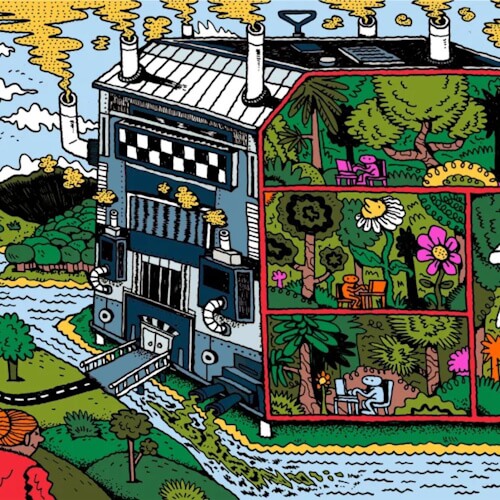
Companies downplay carbon-cutting role, resort to ‘greenhushing’
In the first month of his second term, US President Donald Trump pulled the US out of the Paris Agreement, froze funding for green projects, fired staff from agencies that do climate work and targeted agencies’ climate-related programs and language. Against this backdrop, US executives are dropping the mention of “climate change” in conversations even as they continue developing or deploying climate-friendly solutions, reports Bloomberg. “We have very quickly shifted gears to the other type of conversations,” says Scott Graybeal, chief executive officer of Caelux, which makes high-efficiency glass for solar panels. By that, he means downplaying his company’s role in producing carbon-free electricity and, instead, highlighting domestic job creation, onshore manufacturing and energy independence which resonate with the new administration’s priorities. This has accelerated a phenomenon known as “greenhushing”: the inverse of greenwashing, when companies exaggerate their green bona fides.

Melting Antarctic ice weakening vital ocean current
New research suggests the Antarctic Circumpolar Current — the strongest ocean current on the planet — will be 20 percent slower by 2050 as the world warms, with far-reaching consequences for life on Earth, researchers Taimoor Sohail and Bishakhdatta Gayen write about their findings in The Conversation. The fresh, cool water from melting Antarctic ice is diluting the salty water of the ocean, potentially disrupting the vital ocean current. This could reduce biodiversity and decrease the productivity of fisheries that coastal communities rely on. A weaker current may also take more warm water southwards, exacerbating the melting of Antarctic ice shelves and contributing to global sea-level rise. Faster ice melting could then lead to further weakening of the current, commencing a vicious spiral of current slowdown. This disruption could extend to global climate patterns.
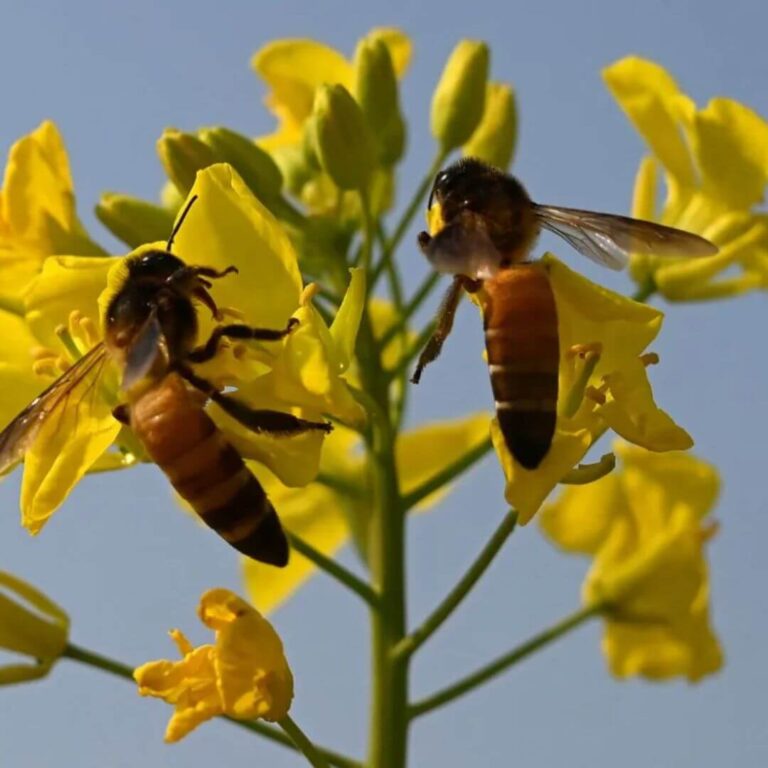
Honey varieties dip in Pakistan as climate change affects bees
Pakistan’s bees once produced 22 varieties of honey but that has plummeted to 11 as flowering seasons shorten. Three of the country’s four honeybee species are endangered. The bees of Pakistan’s 27,000 beekeepers had diverse foliage fed by reliable rainfall, offering a rich source of nectar. Al Jazeera reports that Pakistan’s honey production has dropped 15 percent since 2022, according to the government’s Honey Bee Research Institute in Islamabad. This winter was marked by soaring, hazardous smog levels declared as a national disaster. Research has found air pollution can make it harder for bees to locate flowers. Diminished rainfall, meanwhile, failed to clear the choking air and triggered drought warnings for farmers. New technology offers some hope to keep bees cool, addressing the problem of extreme temperatures.
February 21, 2025
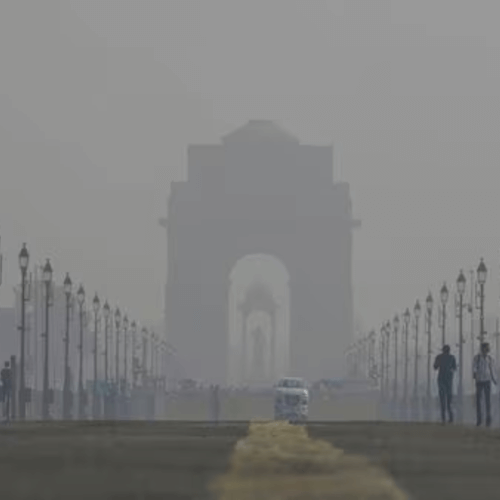
Air pollution, first challenge for new govt in Delhi
After the Bharatiya Janata Party’s (BJP) historic win in Delhi, it will have to start working on its election manifesto of launching ‘Delhi Clean Air Mission’ to halve the city’s average AQI by 2030, reports Mint. The manifesto also assured reduction of PM2.5 and PM10 levels by 50 per cent besides deploying additional road sweeping and water sprinkling machines in the highly polluted areas. As the new government takes office, improving the capital city’s air quality, cleaning the Yamuna River, and tackling the problem of mountainous waste landfills will be top-of-the-mind. The big challenge for the new government is that many things have already been attempted. Earlier governments have closed coal power plants, stopped dirty fuels, scaled up industrial use of natural gas, put public transport and commercial fleets on natural gas, banned old vehicles, restricted truck entry, and tightened control on construction. Yet, clean air continues to elude India’s capital.
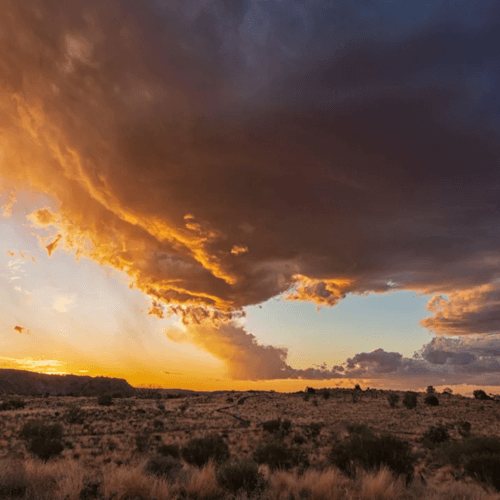
Rising heat: 2025 January hottest on record
The Copernicus Climate Change Service said last month was the warmest January on record, with surface air temperatures 1.75 degrees Celsius above pre-industrial levels, reports The Guardian. La Niña is expected to be weak and the prevailing temperatures in parts of the equatorial Pacific Ocean suggested a slowing or stalling of the move towards the cooling phenomenon. Scientists say every fraction of a degree of warming above 1.5 degrees Celsius increases the intensity and frequency of extreme weather events such as heatwaves, heavy rainfall and droughts. According to CBS News, the surprising January heat record coincides with a new study by a climate science heavyweight, former top NASA scientist James Hansen, and others arguing that global warming is accelerating and the last 15 years have warmed at about twice the rate of the previous 40 years. “I’m confident that this higher rate will continue for at least several years,” said Hansen.

Global risk of flooding to rise exponentially by 2100
According to a new study published in Nature Communications titled ‘The Role of Climate and Population Change in Global Flood Exposure and Vulnerability’, by 2100, those exposed to a 1 percent annual risk flood event (100-year flood) will rise from 1.6 billion to 1.9 billion people. The study provides a comprehensive analysis of how climate change and population growth will shape flood risk by 2100, writes Carboncopy. This increase in exposure is primarily driven by population growth (76.8 percent), with climate change contributing 21.1 percent. By 2100, low-income regions will account for 63 percent of total global flood exposure. This means that the populations least equipped to handle floods — due to inadequate infrastructure, weak governance, and lack of financial resources — will face the highest risks.

Author Yoni Appelbaum decodes America’s mobility crisis
Bloomberg CityLab spoke with Yoni Appelbaum, the author of Stuck: How the Privileged and the Propertied Broke the Engine of American Opportunity about the lost joys of Moving Day, why personal mobility and American progress are intertwined, and how to build out of this crisis. His book tracks the rise and fall of America’s freedom of movement and shows how a growing reluctance to pull up stakes has been implicated in its current crisis of housing affordability. He cites Moving Day — this annual celebration of mobility — that happened on different days in different places. “All unwritten leases expired on the same day, and you could have half of a city pick up and move…There was a strong culture of mobility.” The major culprits in this saga are the zoning regulations and housing codes that rose up to limit residential flexibility.
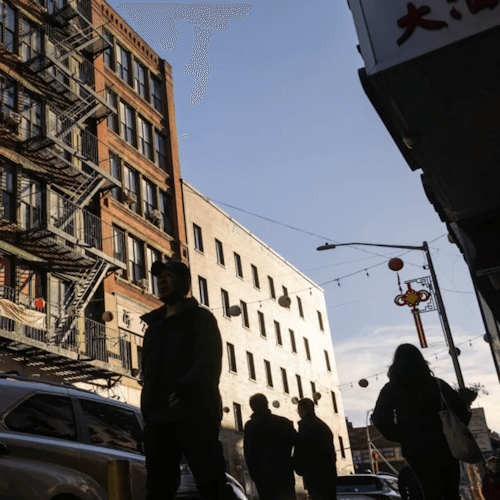
‘Singles tax’ most expensive in New York City
In the city of New York, singles pay an average of $20,100 more per year to live alone, reports CNN, according to an analysis from real estate platforms StreetEasy and Zillow. They calculated the additional cost a person is paying to live solo in a one-bedroom apartment rather than sharing that space with a partner. Couples who live together in a one-bedroom apartment in New York City save a combined average of $40,200 per year on rent, the analysis showed. Other cities with expensive rent, like San Francisco, San Jose, California and Boston, also come with a hefty singles tax — but paying to live alone in New York costs the most. “New York City is abundant with young people looking to live alone. People want to live there, and because the demand is so high, that is a major reason for the discrepancy,” said Emily McDonald, Zillow’s rental trends expert.
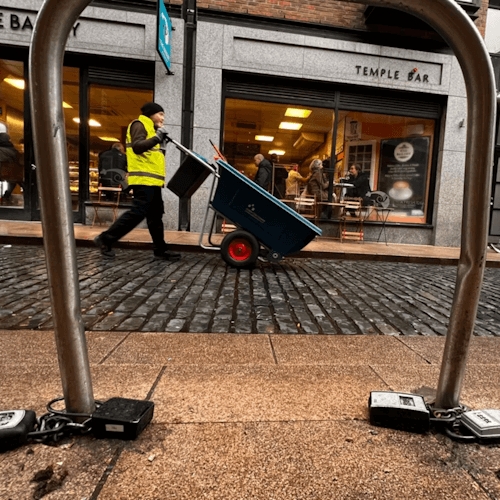
Dublin decides to remove keyboxes left in public areas by landlords
Dublin, the capital of Ireland, will remove and destroy lockboxes being used in the public realm such as bike stands and street signage poles, reports The Guardian. The lockboxes have caused concerns over public health and safety in central tourist districts such as Temple Bar. “They can pose a trip hazard as they are normally fastened with a chain to either signage poles or bike stands,” the council said in a report. The boxes are a way for guests to pick up keys to their holiday homes without landlords having to hand them over in person. But for an increasing number of cities across Europe they have become a hated symbol of overtourism. “The units are left lying on the ground without any protection, resulting in public issues as they may become contaminated.” Dublin city council said that lockboxes should be wall-mounted and located beside the entry to a house or apartment.
February 7, 2025

No allocation for climate adaptation in Union Budget
After the Union Budget was presented on February 1, experts have criticised the lack of financial support in the climate adaptation sector that is critical to the lives and livelihoods of millions living in the vulnerable areas of the country, writes Down To Earth. “Climate adaptation is not an option—it is an imperative,” says Abinash Mohanty, global sector-head of climate change and sustainability of IPE-Global. “The world is facing unprecedented geopolitical pushback on the climate agenda and India should have ensured that its fiscal policies reflect this reality through an enhanced budgetary allocation.” The Union budget proposes to increase allocation to solar energy as well as in fossil fuel sectors, both coal and petroleum and natural gas. The environment, forest and climate change ministry received about Rs 3,412 crore, less than 2.5 percent allocation rise over the last budget figure of Rs 3,330 crore.
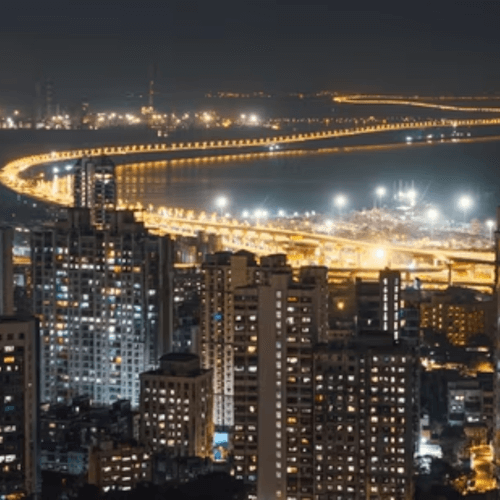
Mumbai civic budget ups fight against air pollution
Focusing on a three-pronged approach to tackle air pollution, the Brihanmumbai Municipal Corporation has allocated ₹113.18 crore in its budget for the environment department, reports Hindustan Times. First, a five-year contract with the Automotive Research Association of India to conduct periodic emission inventories in the city will verify the source of emissions and quantity of pollutants. Secondly, the BMC is in the process of sealing a deal with IIT-Kanpur for the installation of 75 low-cost air-quality-measuring sensors, costing between Rs 3,00,000 and Rs 10,00,000 each, across the city. The BMC will set up a 72-hour air-quality forecasting system called AIRWISE by collaborating with the Indian Institute of Tropical Meteorology, Pune. Other measures to tackle air pollution have already been announced, including five new Continuous Ambient Air Quality Monitoring Systems (CAAQMS) stations, four mobile air-quality measuring vans, 100 dust-suction machines, converting wood/fossil fuel bakeries to cleaner fuel, and the Mumbai Air App.

Trump removes climate mentions from websites
Some researchers have found that their own studies, from ocean carbon cycles to the connectivity of cleaner electrical grids, have now vanished from federal government websites, reports The Guardian. Critics say the actions will stifle the public’s understanding of the climate crisis amid record-breaking temperatures and a wave of storms and wildfires that are being worsened by the burning of fossil fuels. “We should plan for the worst,” said Michael Mann, a climate scientist at the University of Pennsylvania. “The keys to the car have been given to the polluters and fossil fuel plutocrats and they intend to drive it off the climate cliff.” NASA’s key climate change website, which helps chart and explain the increase in the global temperature and planet-heating emissions, remains active but with a note that it is “going to look a little different in the coming months”. The new NASA portal has removed “climate” from its URL.

Record hot years in 2023, 2024 mean world holding onto heat
According to preliminary data from the UK-based research institute European Centre for Medium-Range Weather Forecasts, the temperature in January averaged 13.2 degrees Celsius (55.8F) — hottest January on record, with global average temperatures climbing 1.75 degrees Celsius above pre-industrial levels. In a post detailing the new data, climate scientist Zeke Hausfather said he was surprised to see another all-time high, given expectations that La Niña would make 2025 cooler than a record-hot 2024, Bloomberg reports. “This means that January 2025 stands out as anomalous, even by the standards of the last two years,” he wrote. New research led by James Hansen, director of the climate program at Columbia University and the former NASA scientist who first brought the concept of climate change to the attention of Congress in the 1980s, suggests governments have underestimated how much warming is accelerating. That, in turn, is magnifying natural climate cycles and intensifying extreme weather events.
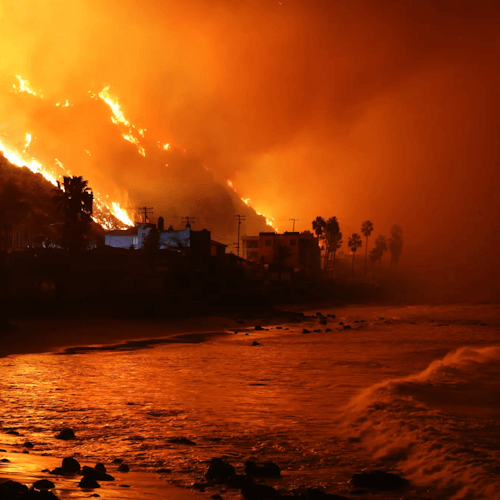
LA fires debris will contaminate the ocean
The smoke that has choked Los Angeles, the debris piled up along decimated streets, the charred and toxic remnants of thousands of destroyed homes, businesses, cars and electronics — nearly all of it, eventually, will come to rest in the ocean. The Los Angeles Times reports that there is no precedent for how an urban fire of this magnitude could change the ecosystem that countless species, including our own, rely on for food and sustenance. Unlike the smoke that emanates from rural wildfires, the charred material now entering the ocean is the stuff of “people’s homes: their cars, their batteries, their electronics,” said Rasmus Swalethorp, a biological oceanographer at UC San Diego’s Scripps Institution of Oceanography. “It’s certainly going to contain a lot of things that we ideally don’t want to see in our oceans — and in our soils, for that matter, and our water streams, and certainly not on our dinner plates.”
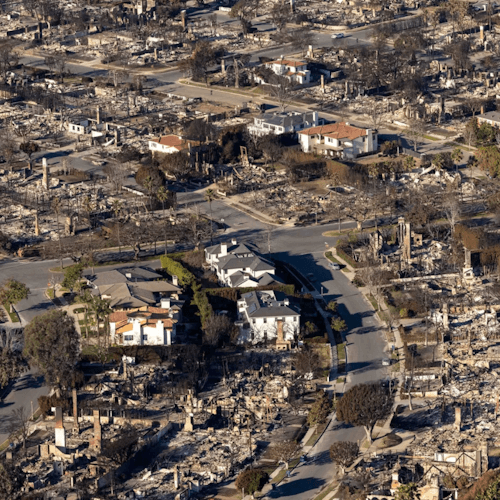
Design choices of houses kept them fire-safe
Some houses with fire-resistant designs remained standing amid neighbourhoods of destruction from the raging wildfires in Pacific Palisades and Malibu in January, reports Bloomberg. A brand-new house in Pacific Palisades designed and built by architect Greg Chasen is one of them. And the house is simple: front-gabled without multiple roof lines, dormers or other pop-outs, which are vulnerable intersections in a fire. Still other elements are invisible but critical – the front of the house was built with heat-treated wood, shielded from flying sparks and embers by the extruding walls and roof line. Passive design features such as windows with triple glazing or vacuum insulation also helped with smoke. Along the side of the house there are no eaves or overhangs, which can form eddies or trap embers blown by high winds. The house doesn’t have any attic vents to allow sparks to get inside the roof, which is metal, with a fire-resistant underlayment.

How zinc mining in Peru is drying up water bodies
Antamina, one of the biggest zinc mines in the world, has been given the go-ahead by the Peruvian government to expand zinc extraction in the area, even though the Andean mountain ranges are classified as extremely vulnerable to the climate crisis by the Intergovernmental Panel on Climate Change (IPCC). More than half of Peru’s glaciers have melted over the past 50 years due to global heating, reports The Guardian. Meltwater from the glaciers is the main water source for the people of the Andes, but is already in short supply. Studies show that mining can exacerbate the climate crisis in glacial areas. “Water supplies are heavily affected already in the exploration stage. Drilling holes of 100-150 metres in the ground interrupts the natural courses of water that feed principal rivers,” says Karem Luque, a Peruvian biologist specialising in human and environmental health.
January 24, 2025
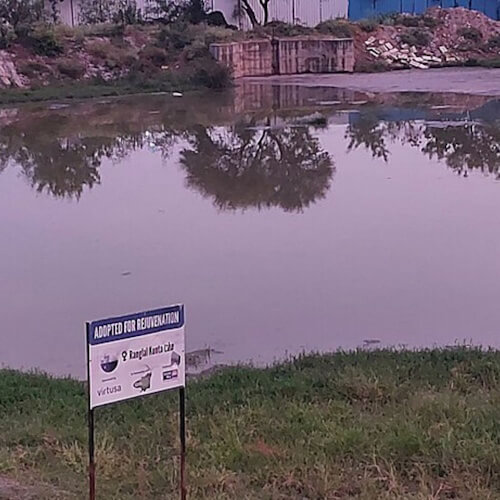
Hyderabad to get dedicated police station to save water bodies
Hyderabad will get a police station to look into illegal encroachments around lakes and tanks, reports The New Indian Express. The Hyderabad Disaster Relief and Asset Protection Agency (HYDRAA) intends to file criminal cases against anyone who encroaches upon full tank levels and buffer zones of water bodies, or parks or government lands, be it a local realtor or political leader. Sixty percent of the lakes and tanks in Hyderabad have already been encroached upon. “There are 185 lakes within Greater Hyderabad Municipal Corporation limits and 400 lakes within Outer Ring Road limits. Our main objective is to protect the water bodies from getting encroached and free them from the clutches of land sharks,” said HYDRAA Commissioner AV Ranganath. “If these encroachments are not stopped, the future of Hyderabad will be under a cloud. The reduction in the areas of water bodies is alarming, it is crucial to act swiftly to prevent further degradation,” he said.
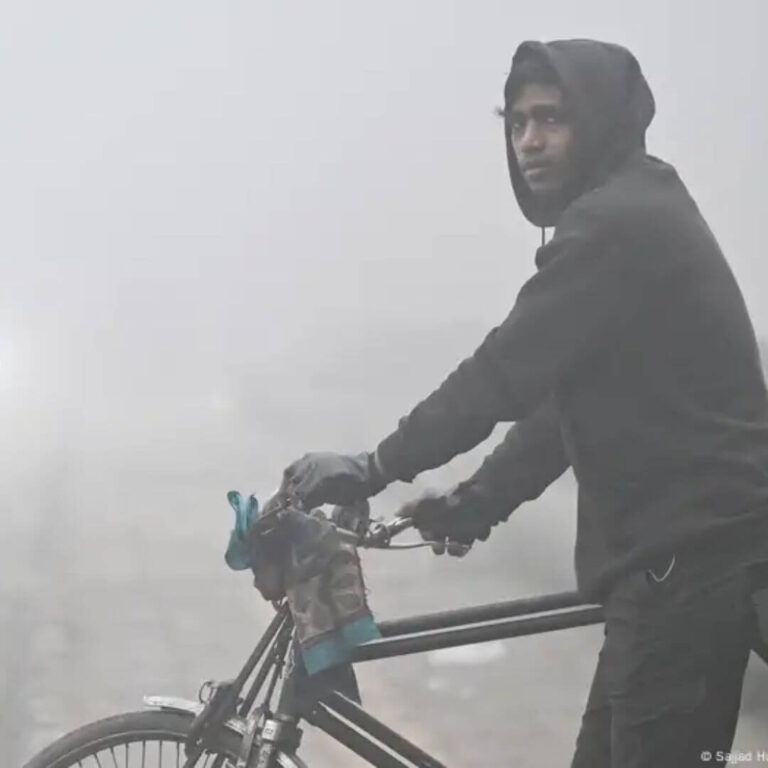
Thick fog brings New Delhi to a crawl
Several areas in northern India including capital city New Delhi were covered in fog in mid-January with over 100 flights and 40 trains delayed, and road traffic affected, according to the German publication DW. The India Meteorological Department issued an orange alert, its second-highest warning level, and predicted dense to very dense fog in many areas while the visibility at Delhi airport was between zero to 100 meters (328 feet), the agency said. Temperatures as low as 7 degrees Celsius (44.6 degrees Fahrenheit) coupled with poor air quality also made the fog conditions worse. Fog is common in the low-lying Indo-Gangetic plains during winter. Delhi’s air pollution also showed a reading of 437 or “hazardous” according to live rankings by Swiss group IQAir. The city is the world’s most polluted, and air quality deteriorates more during winters. It was clouded in a dense smog in November that brought much of the city to a halt.
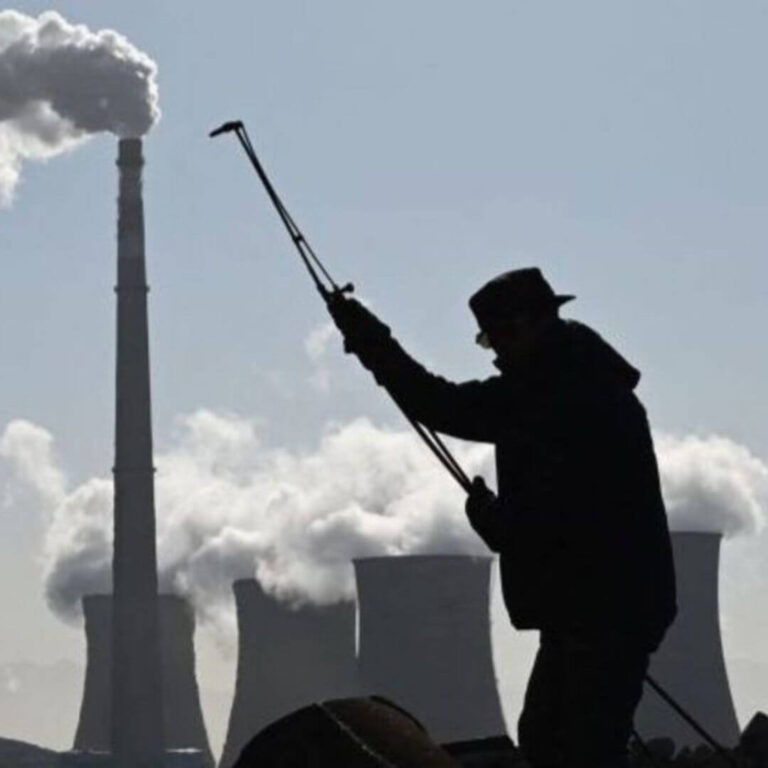
Trump, US new Prez, pulls out of Paris Agreement
At the White House on January 20 evening, the newly-minted 47th President of the United States, Donald Trump, signed an order to withdraw from the Paris climate accord, including a letter to the United Nations explaining the decision, reports BBC. The US will now join Iran, Yemen and Libya as the only countries to stand outside the agreement, which was signed 10 years ago in the French capital, to cut down emissions to address global warming and climate change. The US pull-out may be far more damaging to the global effort to limit emissions given its high emissions load. Trump called the Paris agreement a “ripoff” during a speech at the Capital One Arena in Washington, DC, following his swearing-in. It will be a year before the US is officially out of the pact. The White House also announced a “national energy emergency”, outlining a raft of changes that will reverse US climate regulations and boost oil and gas production.
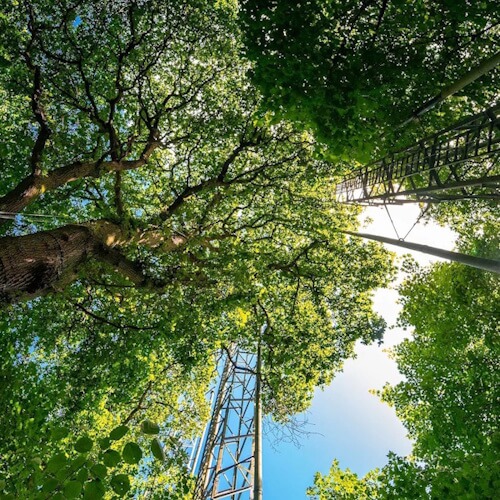
One-third of the world's trees now in danger of extinction
According to the 2024 update of the International Union for Conservation of Nature’s Red List, over one-third of the world’s trees are now in danger of extinction due to global warming, deforestation and invasive species. The BBC reports that researchers across the globe, from Australia to the Amazon rainforest, are experimenting on forests in a bid to better understand the role trees play in keeping the Earth cool. Their findings could transform our understanding of how the forests of the future will respond to climate change. These findings help to reveal the important role that mature forests will play as carbon stores and natural climate solutions in the coming decades. The fact that microbes living in the canopies of these mature oaks also consume methane is an added bonus to mitigating the effects of human emissions. This process, first discovered in 2024, means that forests are even more important in the fight against climate change than scientists previously understood.
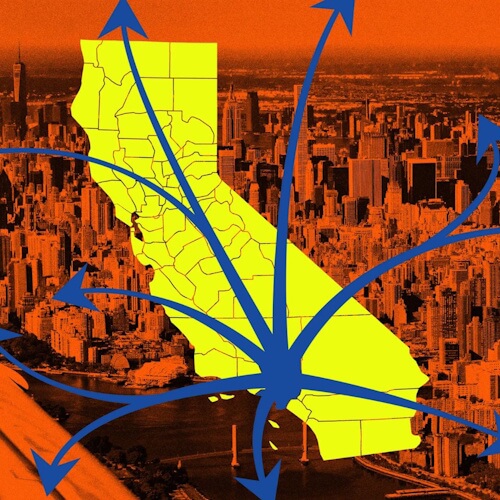
LA wildfire-affected look to New York for housing
With tens of thousands of Californians still under evacuation orders after the massive wildfires raging since early January, thousands of structures destroyed along with a lot of the infrastructure needed to supply them with basic utilities, and experts saying that, optimistically, rebuilding will take two to three years, it’s clear that thousands of people will need to find semi-permanent housing in the immediate future. Curbed reports that’s likely to prove difficult in Los Angeles (LA), where the sudden housing crunch has resulted in price gouging which, despite being illegal, is widespread. While many Angelenos are staying in, or at least close to, the city right now, some have taken the massive destruction as a sign that it’s time to move on — a reversal of the long-standing New Yorker dream of moving west. For some homeowners who are already bicoastal, New York is the obvious place to live during the yearslong process of rebuilding their LA homes.
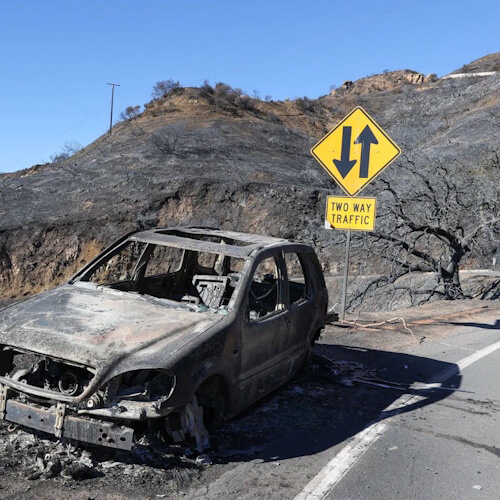
Evacuation under scrutiny in California’s wildfires
Hundreds of thousands of Los Angeles residents have been displaced from their homes since a devastating series of wind-driven wildfires erupted on January 7. In Pacific Palisades, home to the largest of the ongoing blazes, the neighbourhood’s evacuation planning has come under scrutiny, reads a Bloomberg report. Many residents left their cars in the middle of Palisades Drive and Sunset Boulevard during the chaotic early phase of the disaster that firefighters were forced to use a bulldozer to clear a path through a tangle of abandoned vehicles. In the years since the devastation of the CampFire, California lawmakers passed legislation aimed at improving evacuation planning. Among them is a law requiring cities and counties to map evacuation routes as part of their general plans, but as the Redding Record Searchlight recently reported, a lack of detail in those maps has not proven helpful to evacuees of the latest fires.
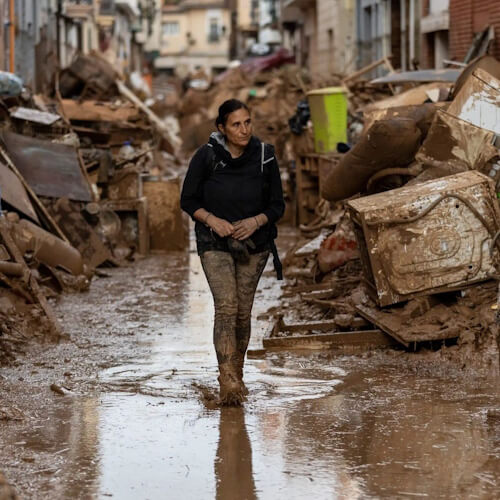
50 percent GDP loss between 2070 and 2090: Report
Risk management experts from the Institute and Faculty of Actuaries (IFoA) said that climate risk assessments being used by financial institutions, politicians and civil servants to assess the economic effects of global heating were wrong, reports The Guardian. The global economy could face 50 percent loss in Gross Domestic Product (GDP) between 2070 and 2090 from the catastrophic shocks of climate change unless immediate action by political leaders is taken to decarbonise and restore nature, said a new report, named Planetary Solvency – finding our balance with nature. Published on January 16, the report uses math and statistics to analyse financial risk for businesses and governments, and criticises the dominant economic theory used by governments across the developed world. It states that political leaders ignored the expected severe effects of climate change such as tipping points, sea temperature rises, migration and conflict as a result of global heating.
January 10, 2025
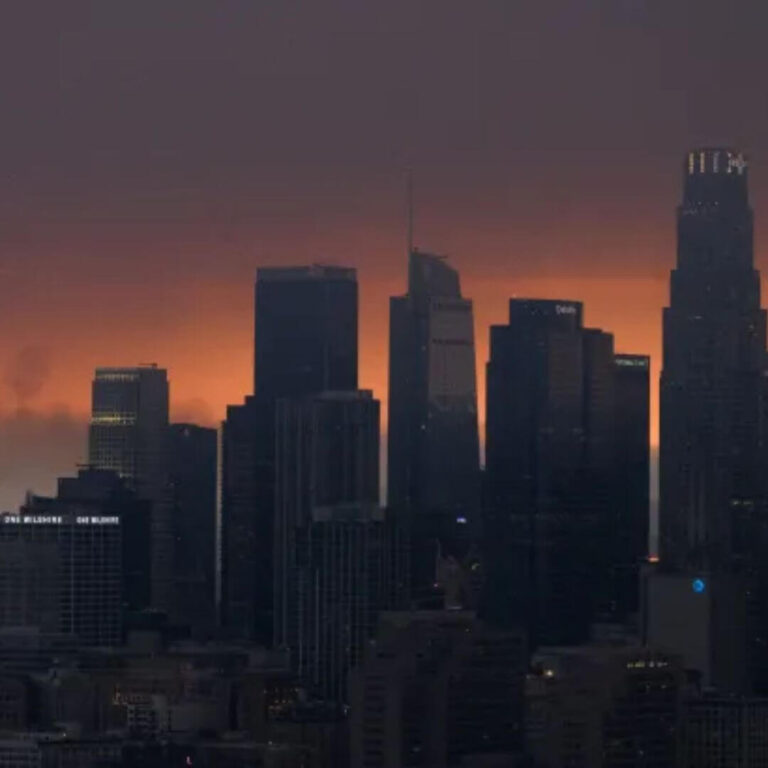
Deadly California wildfires gut houses, kill five
Wildfires ravaged parts of Los Angeles in California, in the United States, on January 7, killing at least five people and gutting thousands of homes. Aljazeera reports that More than 130,000 residents in different neighbourhoods of Los Angeles city have been ordered to evacuate as the fires, which erupted on January 7, continue to rapidly spread, fuelled by high winds. Climate change has contributed to an increase in the frequency, season length and burned area of wildfires, according to a report by the US Environmental Protection Agency. So, dry conditions aided by Santa Ana winds – dry and hot winds common in the area – most likely caused the wildfires. The dry desert air moves from the interior of the region towards the coast and offshore. It contributes to wildfires because it significantly reduces humidity in the environment due to its dry nature. This causes vegetation to become very dehydrated and susceptible to fire.

Earthquake in Tibet kills 126, causes severe damage
At least 126 people were killed and 188 injured after a powerful earthquake struck the mountainous Tibet region on January 7, reports Aljazeera. China Earthquake Networks Center recorded a magnitude of 6.8 but the United States Geological Survey measured its magnitude as 7.1. Crumbled shop fronts could be seen in a video showing the aftermath in Lhatse, about 150 kilometres east of Shigatse city, with debris spilling onto the road. Shigatse is one of Tibet’s holiest cities and the seat of the Panchen Lama, one of the most important figures in Tibetan Buddhism. Powerful tremors were also felt in northern India’s Bihar state and Nepal’s capital, Kathmandu, 400 kilometres away. Chinese broadcaster CCTV says there have been 29 earthquakes with magnitudes of 3 or higher within 200 kilometres (124 miles) of the Shigatse quake epicentre in the past five years.
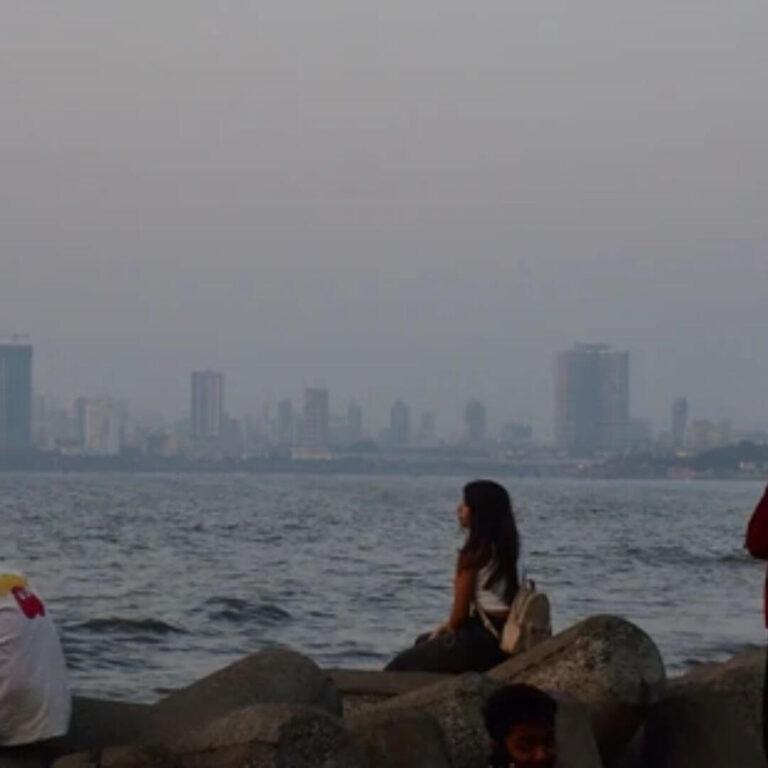
Stop-work notice at sites after Mumbai air quality dips
In the first few days of January 2025, the areas of Mumbai Central and Mazgaon in Mumbai recorded air quality index above 200 and the rest of the city was polluted. This prompted the Brihanmumbai Municipal Corporation (BMC) to stop work on construction sites, stated a news report in Hindustan Times. The K East ward in Andheri East issued 10 show-cause notices to road contractors for non-adherence to air pollution guidelines. It also issued 462 stop-work notices to construction sites and infrastructure projects that failed to comply with the show cause notices. Seventy-one show-cause notices, meanwhile, have been revoked. It has issued 856 show-cause notices to various construction sites. Rajesh Tamhane, deputy municipal commissioner (environment) said, “We have issued notices to three categories—municipal projects, other projects and construction sites.”
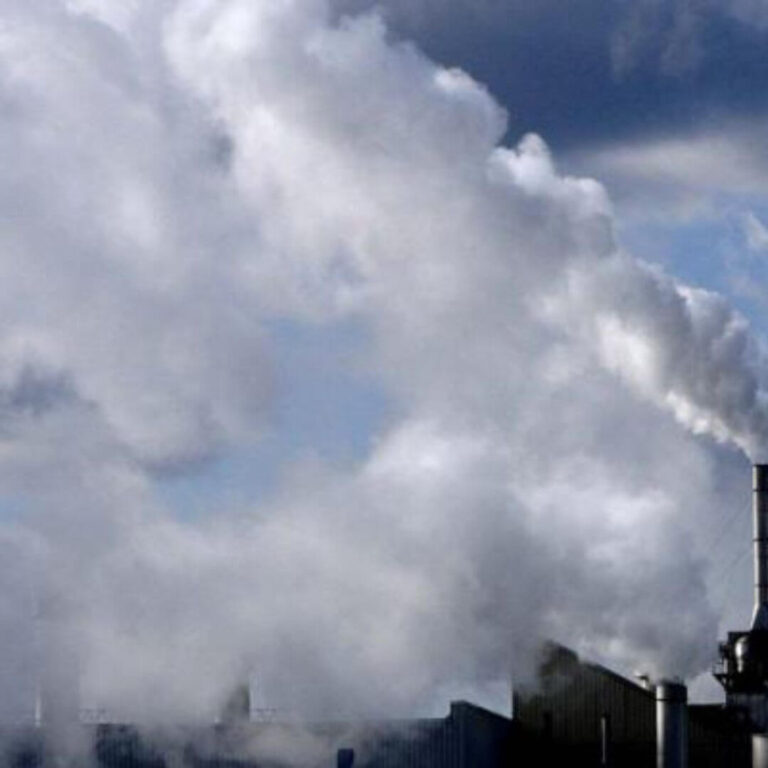
India’s climate report to UN relies on ‘vague’ data
India’s fourth biennial update reports (BUR), submitted to the United Nations Framework Convention on Climate Change on December 30, lists its Greenhouse gas emissions in the year 2020, reports The Wire. During that year, the country emitted 2,959 mt of carbon dioxide equivalent (and 2,437 mt if Land Use-Land Use Change and Forestry is included). The main contributors to GHG emissions in 2020 were fossil fuels, methane emissions from livestock and increasing aluminium and cement production, the BUR stated. India’s State of Forest Reports have consistently reported an increase in tree and forest cover, and a corresponding increase in carbon stock, and thereby sequestration. However, scientists in India have also consistently raised concerns about these ISFRs which the BURs quote with concerns around the ISFR’s methodology.
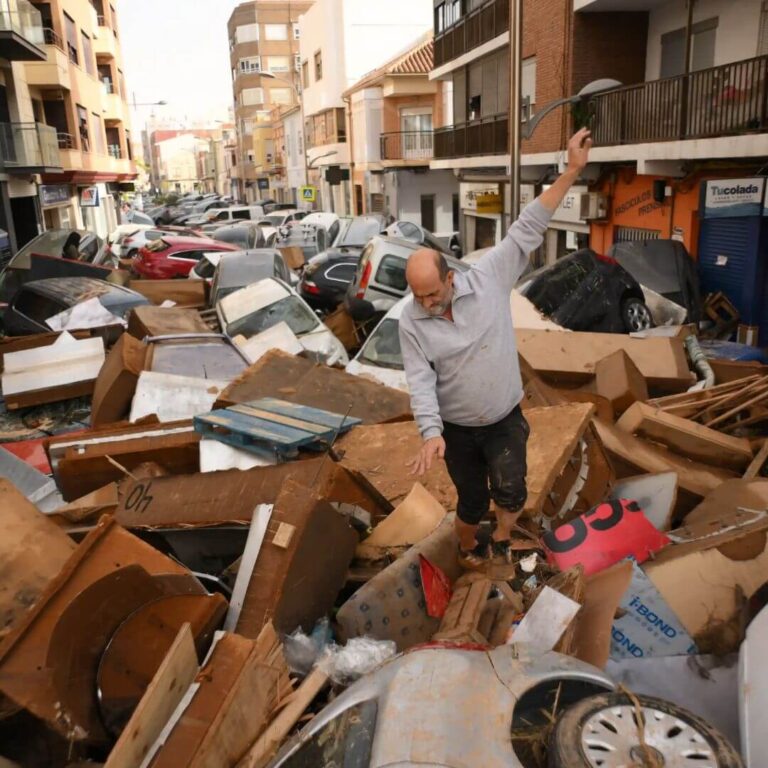
‘There is no space at COP for the truth’
Elisa Morgera, the UN special rapporteur on climate change, in an exclusive interview with The Guardian, voiced her concerns about how and what information is shared within the UN climate negotiations was underscored at Cop29 in Baku, Azerbaijan. She said the annual UN climate summits and the consensus-based, state-driven process is dominated by powerful forces pushing false narratives and by tech fixes that divert attention from real, equitable solutions for the countries least responsible and most affected. “We can observe that some states are not acting in good faith in very clear ways, which is the basis of any international regime. There is widespread disregard for the rule of international law, and also a very clear pushback on the science, and shrinking of civil spaces at all levels. Basically, the truth is out of the conversation. That is the problem – there is no space at COP for the truth,” said Morgera.
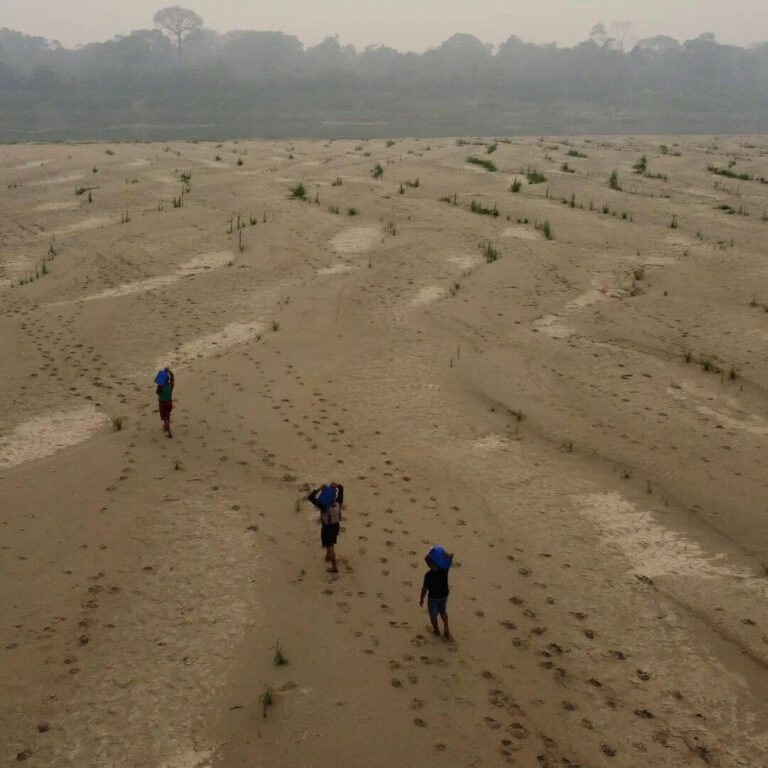
Global heating disrupting Earth’s water cycle: Report
The 2024 Global Water Monitor Report, produced by an international team of researchers, has found that rising temperatures, caused by continued burning of fossil fuels, disrupt the water cycle in multiple ways, reports The Guardian. They found rainfall records are being broken with increasing regularity. Global heating can also increase drought by causing more evaporation from soil, as well as shifting rainfall patterns. “In 2024, Earth experienced its hottest year on record and water systems across the globe bore the brunt, wreaking havoc on the water cycle,” said the report’s leader, Prof Albert van Dijk. He said 2024 was a year of extremes but not an isolated occurrence. “It is part of a worsening trend of more intense floods, prolonged droughts, and record-breaking extremes.” The report warned of even greater dangers in 2025 as carbon emissions continued to rise .
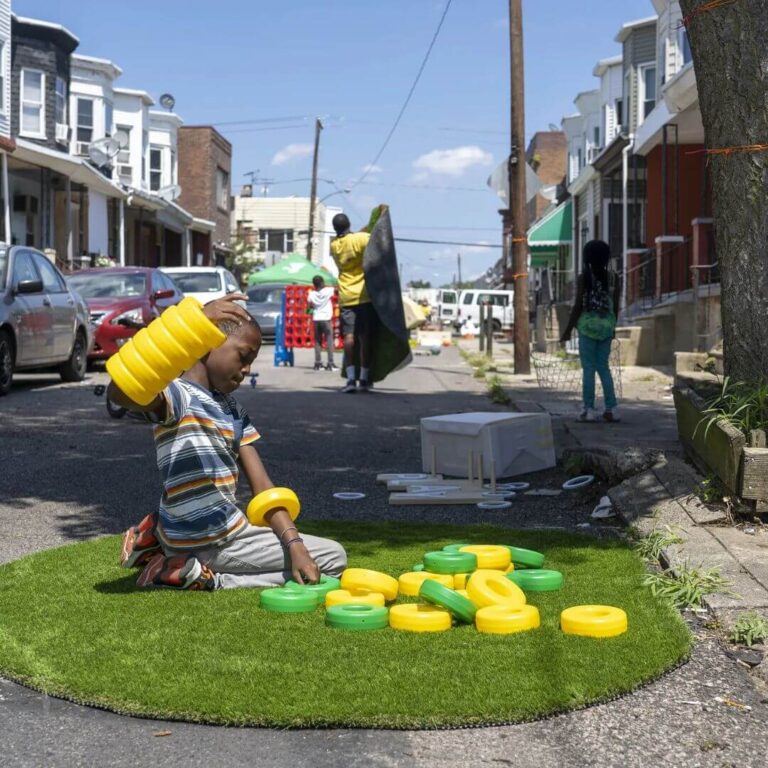
Design safe spaces for children to roam freely
Children need an environment in which unhealthy risks from the street such as traffic violence, pollution and noise are minimised, while opportunities for play, independent movement, and social interactions are maximized, opines a Bloomberg article. Paseo Park, a 1.3-mile-long corridor in family-heavy Jackson Heights, Queens in New York, is finally getting a permanent open streets design to reduce car traffic after people experienced the joys of not having to text to make plans, pay for organised after-school activities, or battle with cars when learning to ride a bike. Widening sidewalks, closing streets for play on afternoons and weekends, adding speed humps and opening schoolyards after hours can provide the space. Neighbourhoods that mix housing with retail and offices have built-in amenities that make such spaces more conducive to child independence and whole-family convenience.
